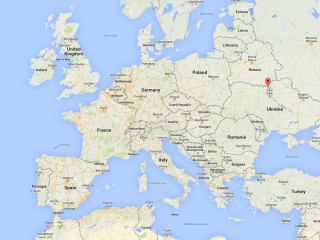Chernobyl: Questions and Answers #2 Photography - M1key - Michal Huniewicz

In part #1 of this gallery, I gave a bit of an intro to the Chernobyl disaster, provided less well-known facts, described the basics of how radiation works, and focused on the human aspect of the tragedy.
Now, we will explore the plant itself, learn some more surprising facts, and have a look at the technical side of reactors RBMK used at Chernobyl.
If you liked this gallery, you can follow me on Twitter or Facebook, much appreciated.
Sources:
1,
2,
3,
4,
5,
6,
7,
8,
9,
10,
11,
12,
13,
14,
15,
16,
17,
18,
19,
20,
21,
22,
23,
24,
25,
26,
27.
Uploaded on: 2015-09-06.
Entering the Plant
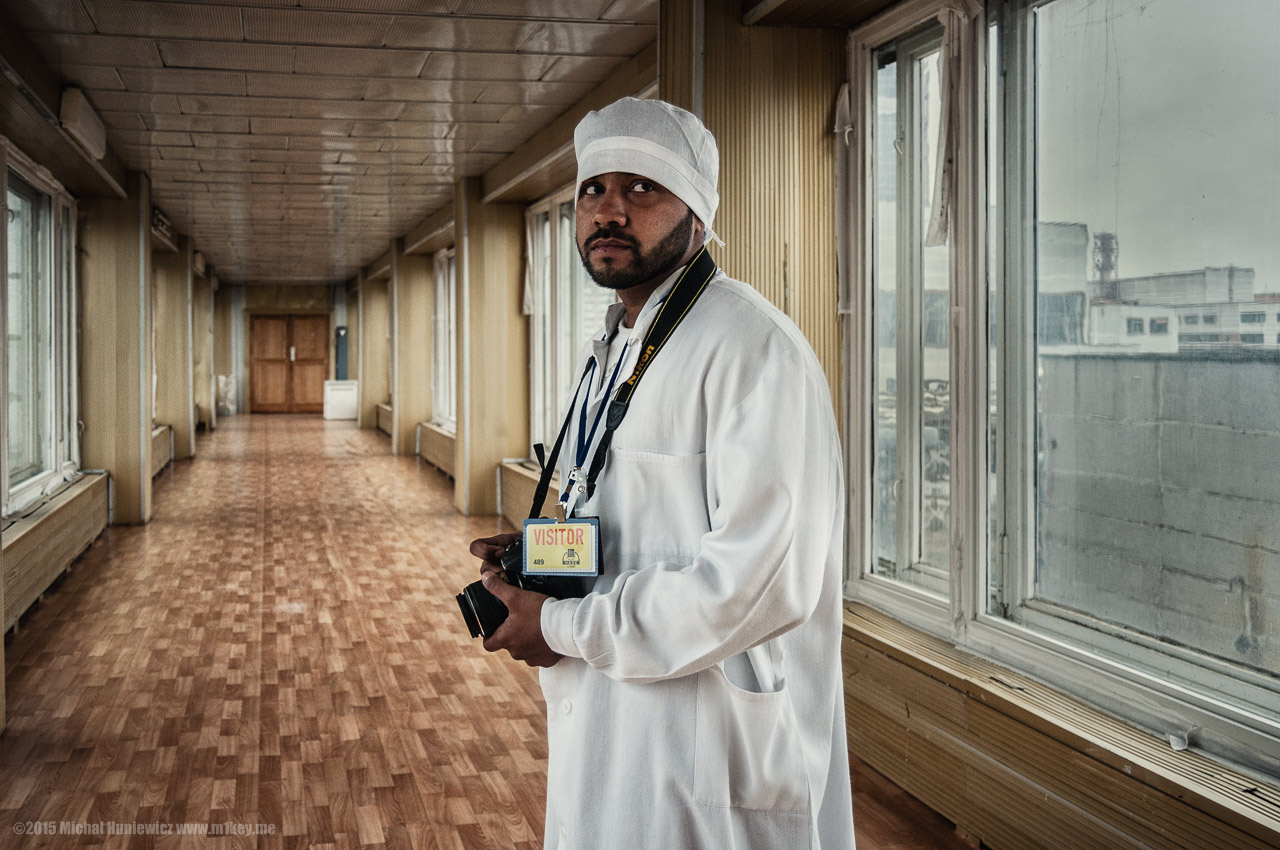
Yes. But - you need a special permit. Overall, I believe we needed 7 kinds of permits for our trip to Chernobyl. As far as I know, there is only one company that can get you in, so do contact me if you would like to go there yourself.
Film Badge Dosimeter
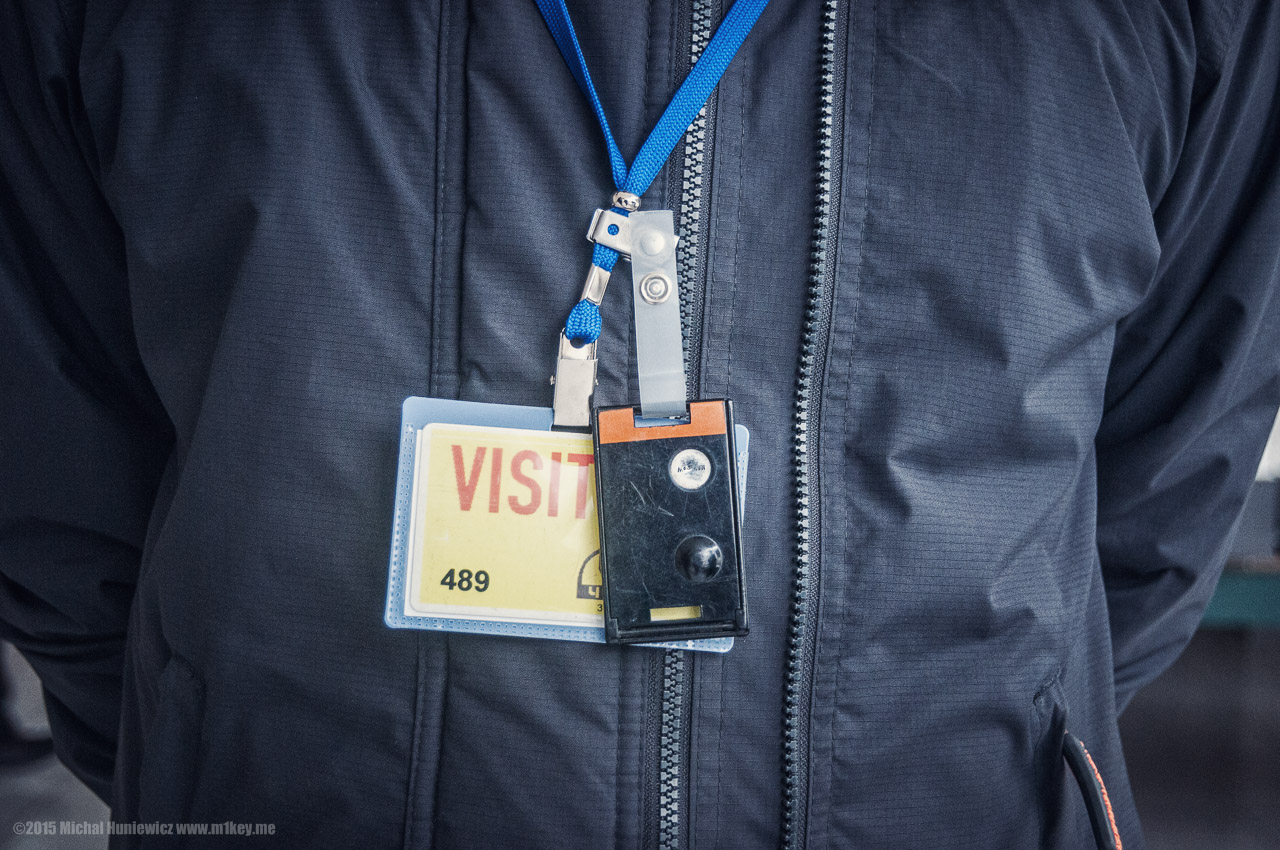
Yes, although the exposure is higher than almost anywhere else in the Zone, and it grows exponentially as you get closer to Reactor 4. You will be issued a film badge dosimeter like the one in the photo, an unassuming legacy of the Manhattan Project [2]; a little device measuring the exposure to your vital organs, since it'll hang off your neck around your chest. After your leave the plant, you will give it back, and the authorities will verify your exposure... and never get back to you, from what we were told.
Panels
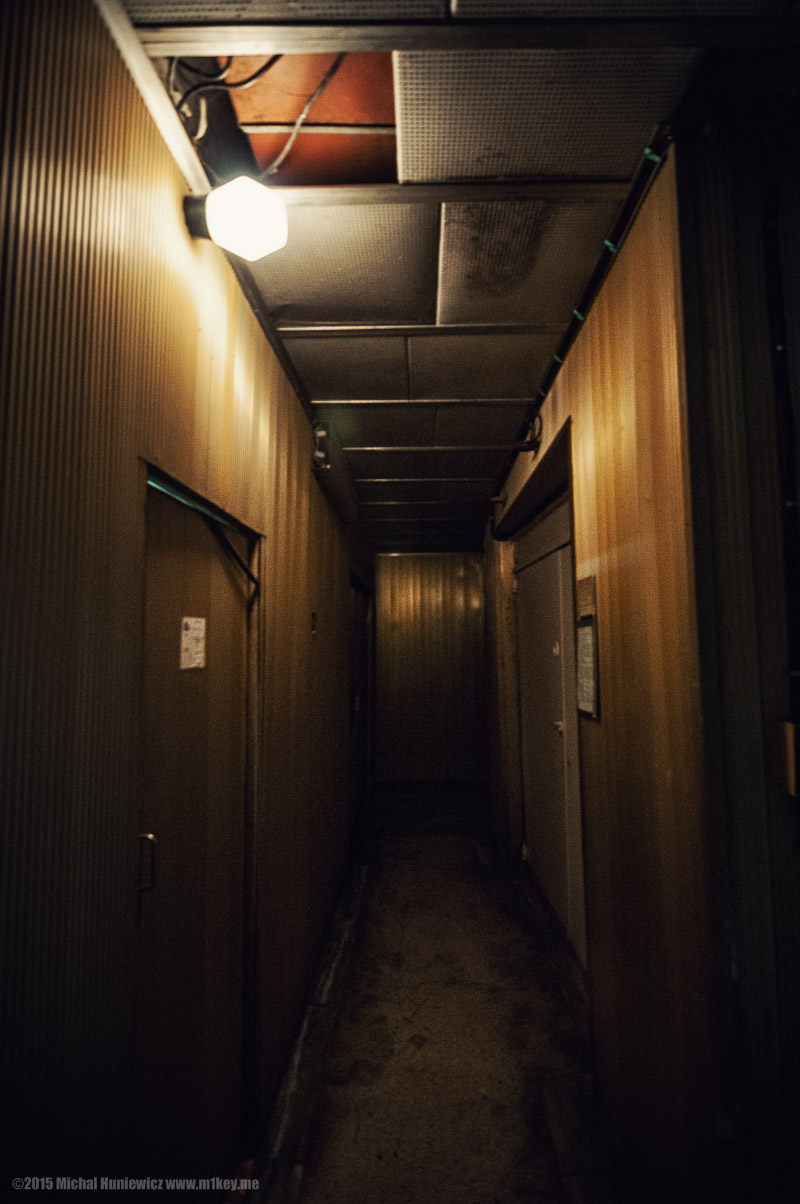
Because it was a traditional explosion, not a nuclear explosion. Although exposed to radiation, Reactors 1-3 were not otherwise damaged much. To protect people working at ChNPP, panels were put on walls and ceilings to limit the radiation exposure. However, when we entered the plant, I was advised to silence my dosimeter, as the radiation was so high that it would be going off all the time.
Sarcophagus
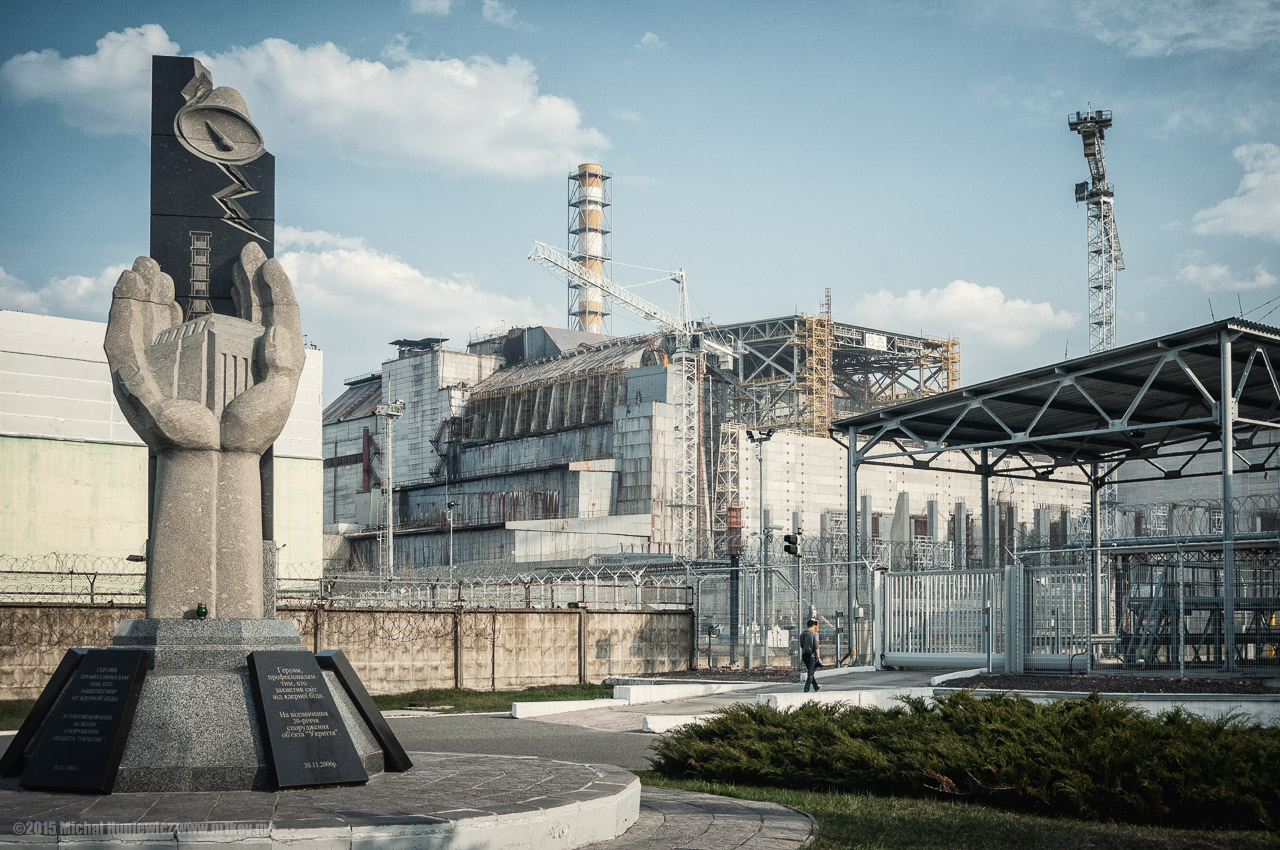
It ceased to exist, becoming a crater instead. This cross section of Reactor 4 allows you to see the scale of the damage, as well as this small-scale model.
The damage was so bad, that it was decided sand, boron, and lead would be dropped into the crater (which, some say [1], was a bad idea, but the USSR had to improvise) from helicopters.
Because the Mi helicopters used in that operation do not allow the pilot to look down, in order to aim, they had to stick their heads out of the window, receiving a huge dose of radiation. [1]
In the end, the Sarcophagus was built to contain what was left of the Reactor. Sometimes referred to as the pyramid of the 20th century, t was assembled remotely by robots, and it was designed to last 15 years - but it's been there for 29 years already.
New Safe Confinement
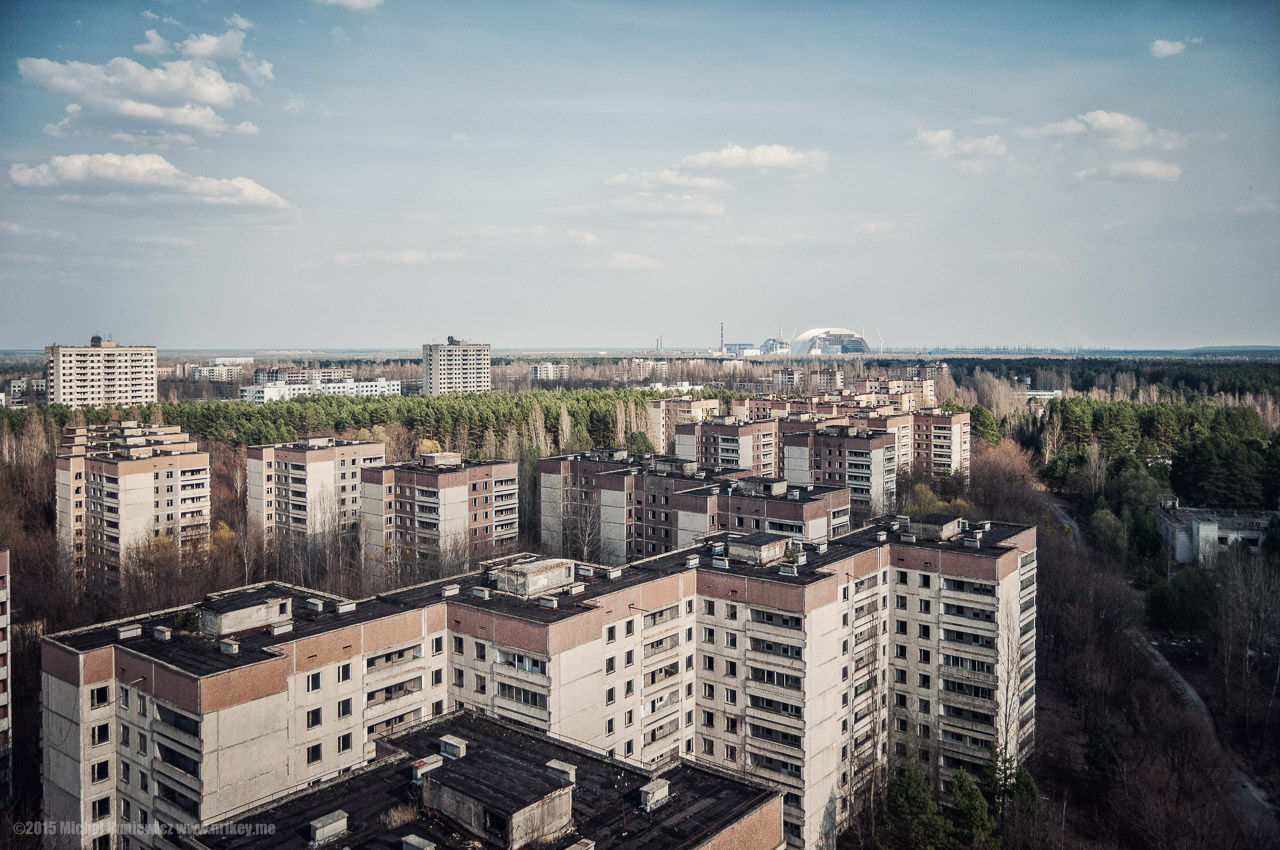
No, it is in fact a ticking bomb. Because it's had to last almost 3 decades, it requires constant care, which means people have to venture inside and perform quick fixes, but they can only work inside for a few minutes a month. [3] It periodically "rains" inside - that's the dust suppression system to keep contaminated dirt from becoming airborne. [4]
If the Sarcophagus were to collapse, the effects could be worse than the original disaster itself, hence work has been going on the so called New Safe Confinement - that immensely expensive stadium-like structure you can see in the distance from a Pripyat building rooftop, being build next to the Sarcophagus.
New Safe Confinement
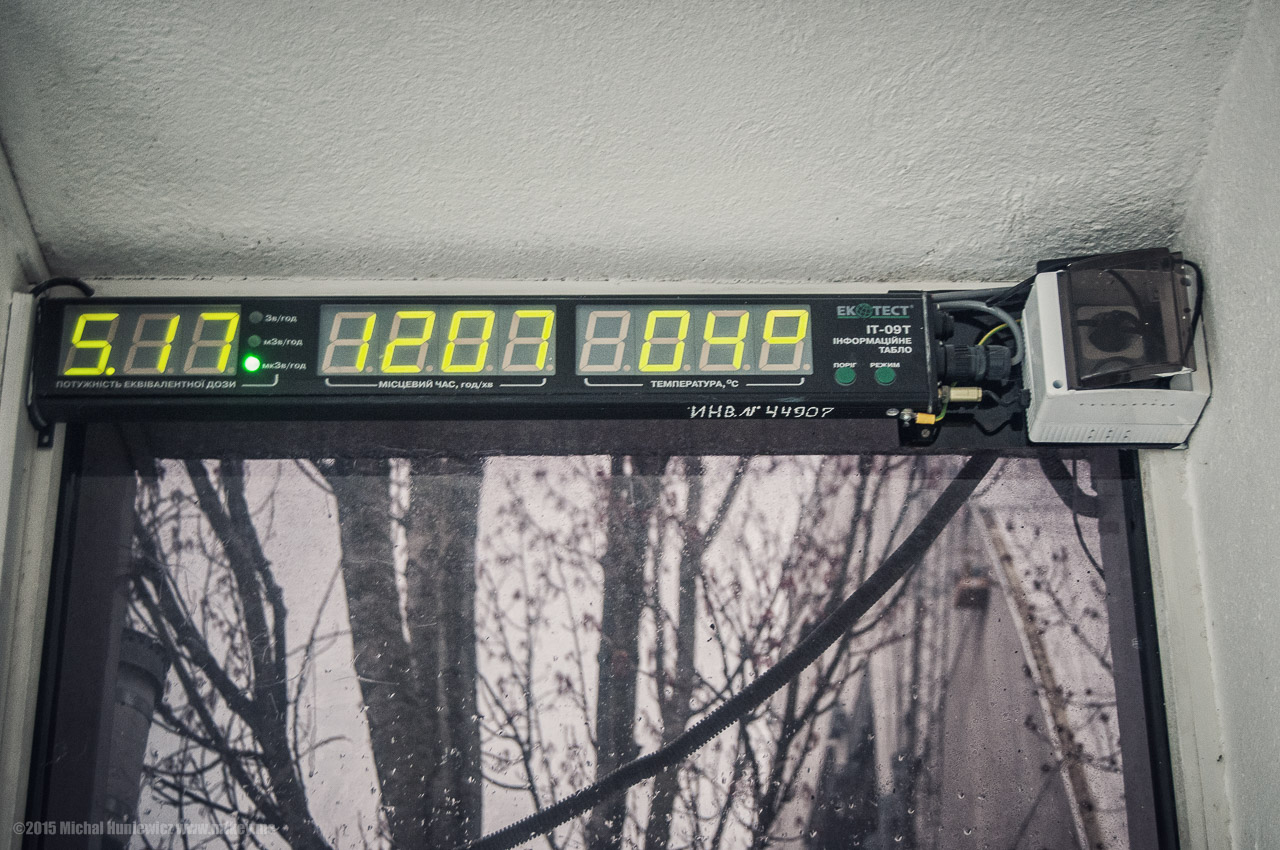
The constantly delayed project is highly ambitious. When finished, rather like a giant Russian doll, the huge structure will slide over the Sarcophagus, and enclose it completely. Then, the old Sarcophagus will be finally dismantled by robots, and then the remains of Reactor 4 will follow. And then we're safe, except the nuclear waste has to be dumped somewhere...
In the photo, digital display at the New Safe Confinement site informs you about the current time, temperature - and radiation. That's 5.17 uSv/h, while you are being exposed to about 0.16 uSv/h right now. If you missed part 1 and are wondering what all that means, here's a quick intro to radiation levels.
Robotic Heroes
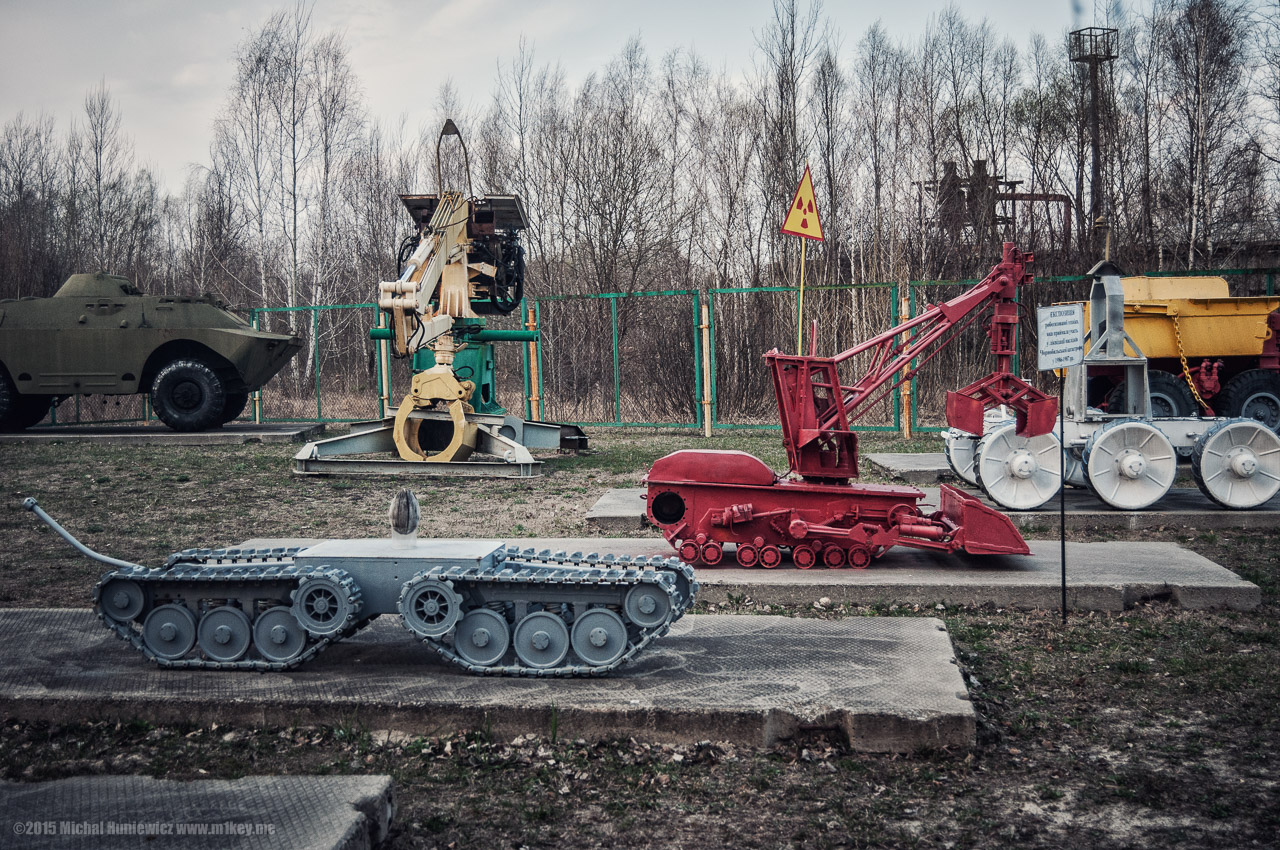
Here are some of the robotic heroes involved in the clean up of the roof next to Reactor 4, which was one of the most contaminated sites after the disaster, as it was littered with some of the graphite blocks (photo of a graphite block into which a fuel rod would be inserted), originally residing inside the reactor itself. The ambitious plan to use German, Japanese, and other robots ultimately failed, as the robots would simply break down from the radiation. So - the so called biorobots were used. [5] That's humans. They would break down too, just later, having been given 100 rubles and a certificate. Although instructed not to look into Reactor 4, many could not resist the temptation to look the monster in the eye. "The boys looked". [1]
When one of the robots broke down, it failed to react to commands, and drove straight off the roof - in what some saw as a robotic suicide.
Magda
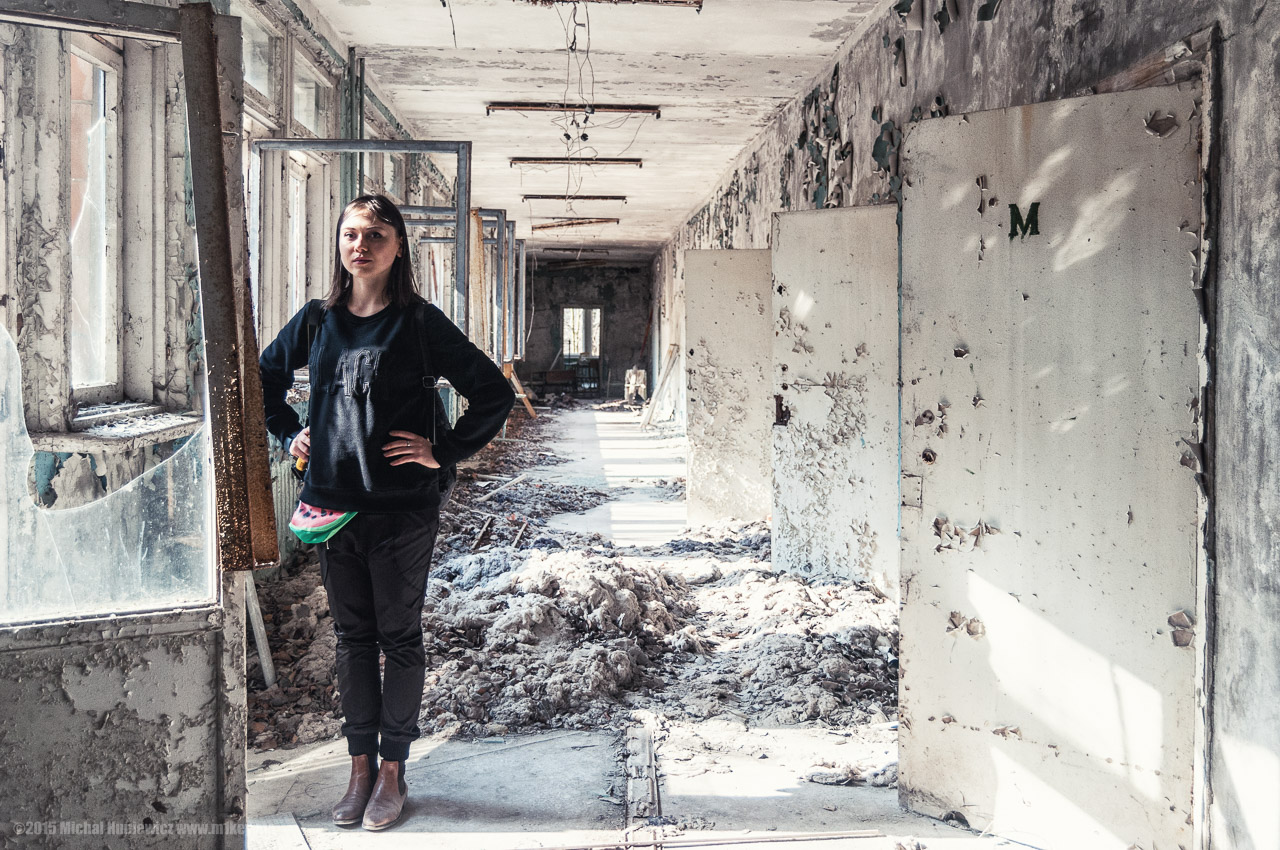
Ionising radiation knocks off electrons, weakening and breaking up DNA, so that cells die or mutate in ways that may lead to cancer. If your exposure is minimal, your body may be able to repair the DNA.
However, should you get one Sievert or more, it would damage your bone marrow, you'd haemorrhage, eventually suffer from neurological damage. While you may get sick within minutes, you normally die only after 24 hours or more.
Pripyat Hospital Operating Room
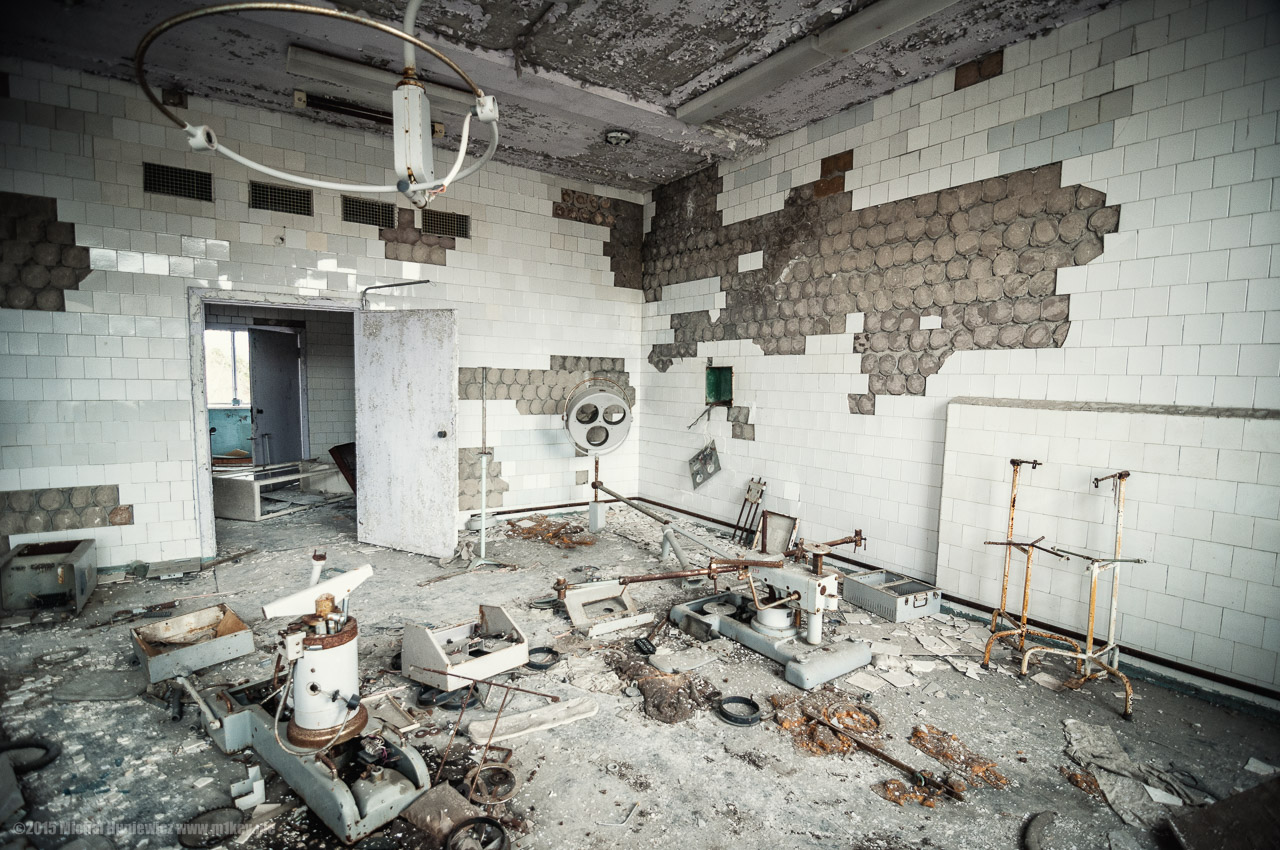
Without treatment, you could get away with 4-5 Sieverts. Anything above that and you are dead, unless you quickly receive proper medical attention, in which case you might get away with as much as 10 or a bit more. It all depends on the exposure time (it's better to spread it over time), and which part of your body is affected. [7] The men working on the roof of Chernobyl would wear ordinary cheap imitation-leather booth and what they called the egg basket - a lead protection for their testicles. It's not perfect but may help, although the Chernobyl Liquidators were not considered terribly appropriate partners after the disaster, as people feared genetic disease their offspring might have. [1]
If you're planning to go to Mars, prepare for more than 1 Sievert. [7].
Some of the Chernobyl survivors required bone marrow transplants - in some cases they received the tissue from the livers of stillborn or aborted babies. [8]
Pripyat Fire Department
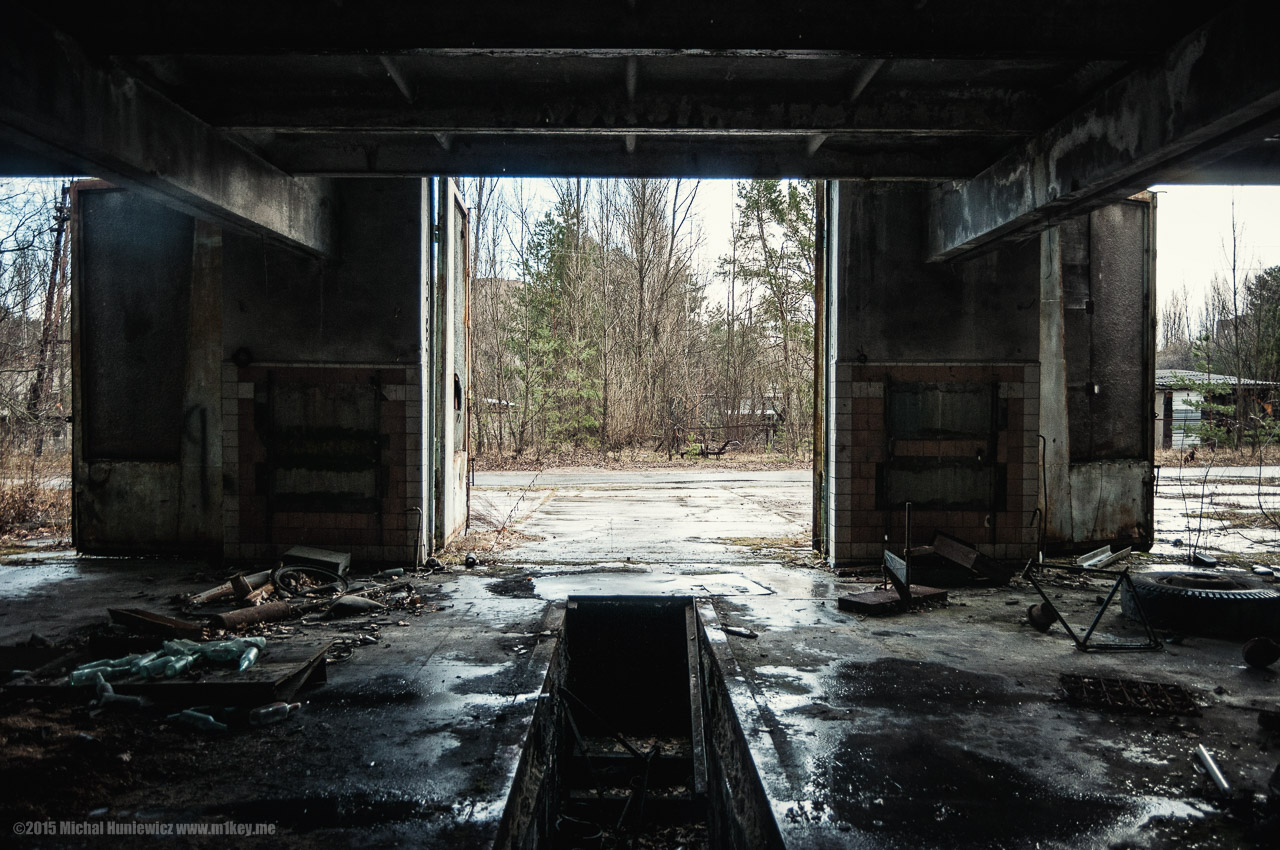
Just as it happened to me at age 2, you may be given Lugol's solution, also known as potassium iodide. Blood and marrow transfusion follows, if it's really bad. There's also an "intelligent" drug called DTPA (Diethylenetriamine pentaacetic acid). DTPA binds to particles of the radioactive elements plutonium, americium and curium, which then leave the body in your urine. [22]
In the photo, this is where the first firefighters responded from to the disaster, aside from the small, dedicated plant unit.
Men Who Build New Safe Confinement
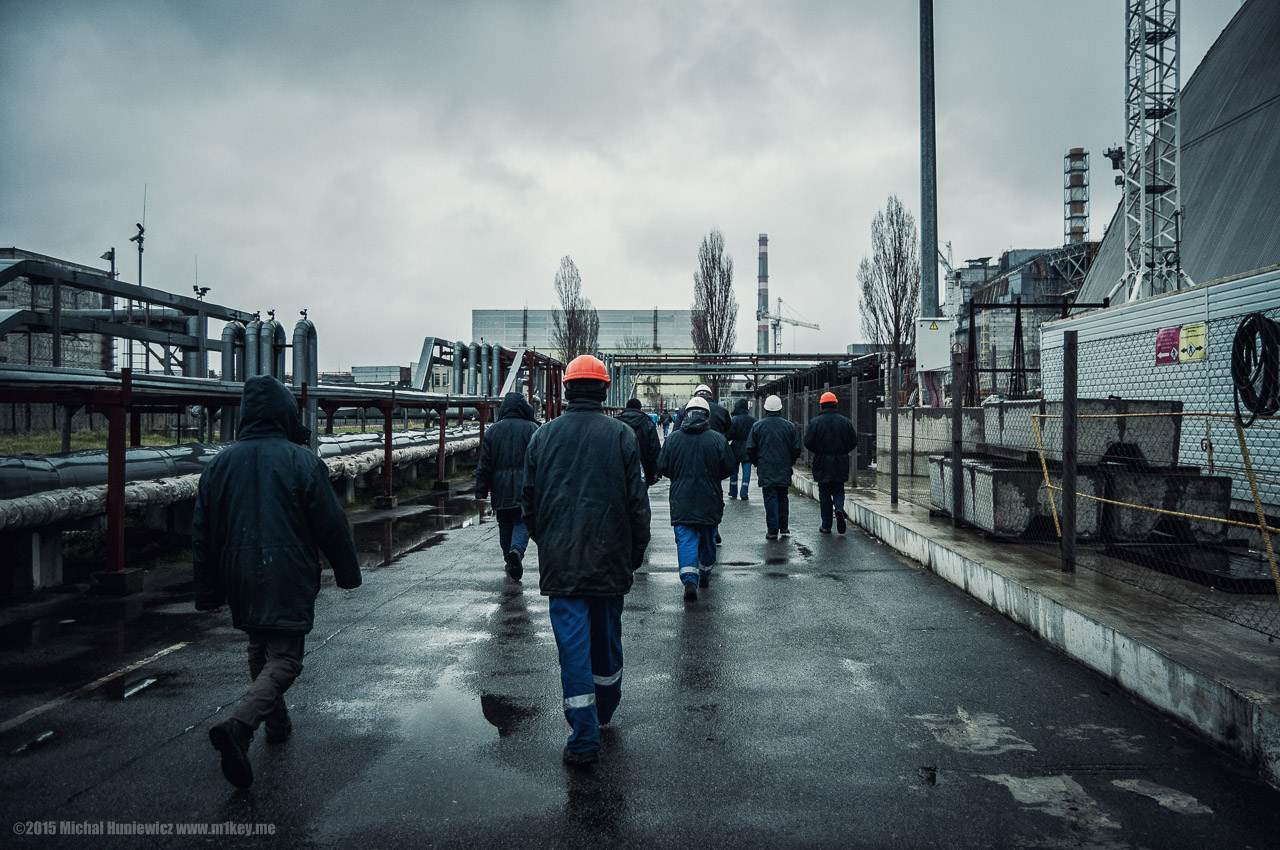
No, it is being built by biorobots again, but this time it's a lot safer, as the structure is being built next to the Sarcophagus.
The Arch
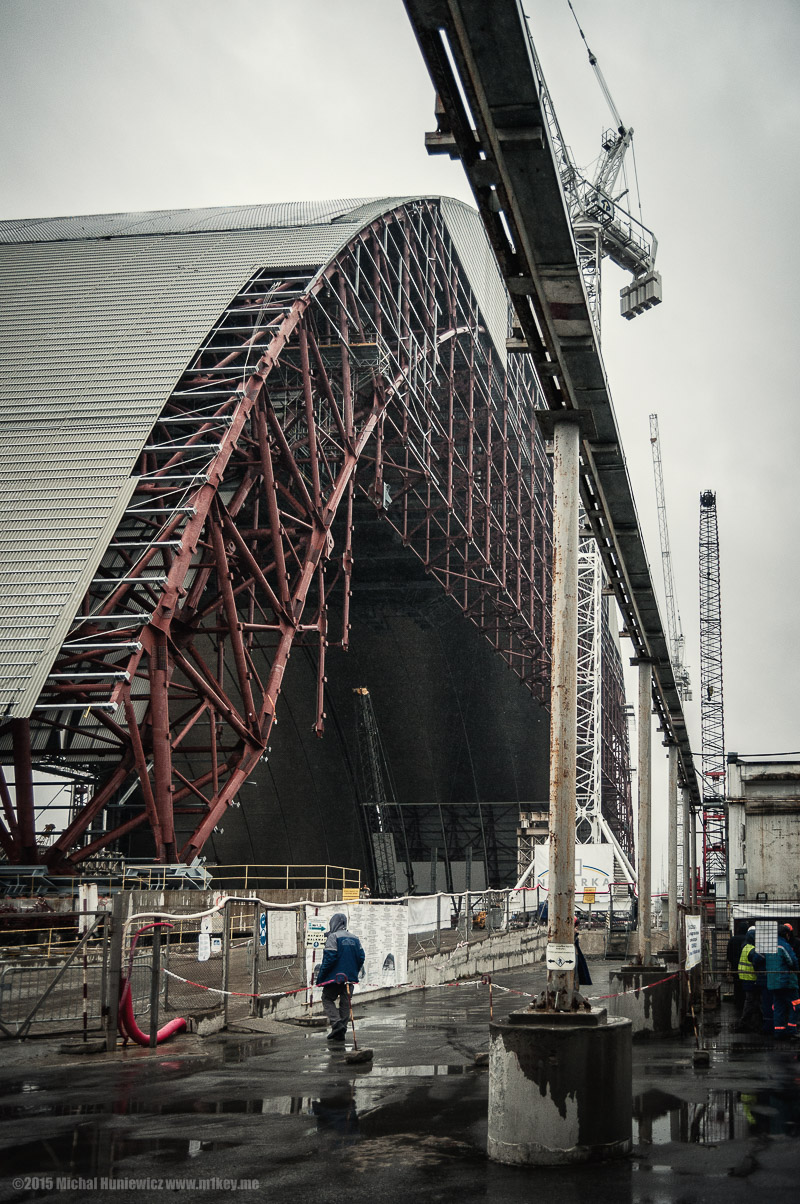
Although no one can exactly tell, the 110 metre tall [11] New Safe Confinement is designed to last 100 years, giving enough time to dismantle what remains of Reactor 4. [9]
Construction Site
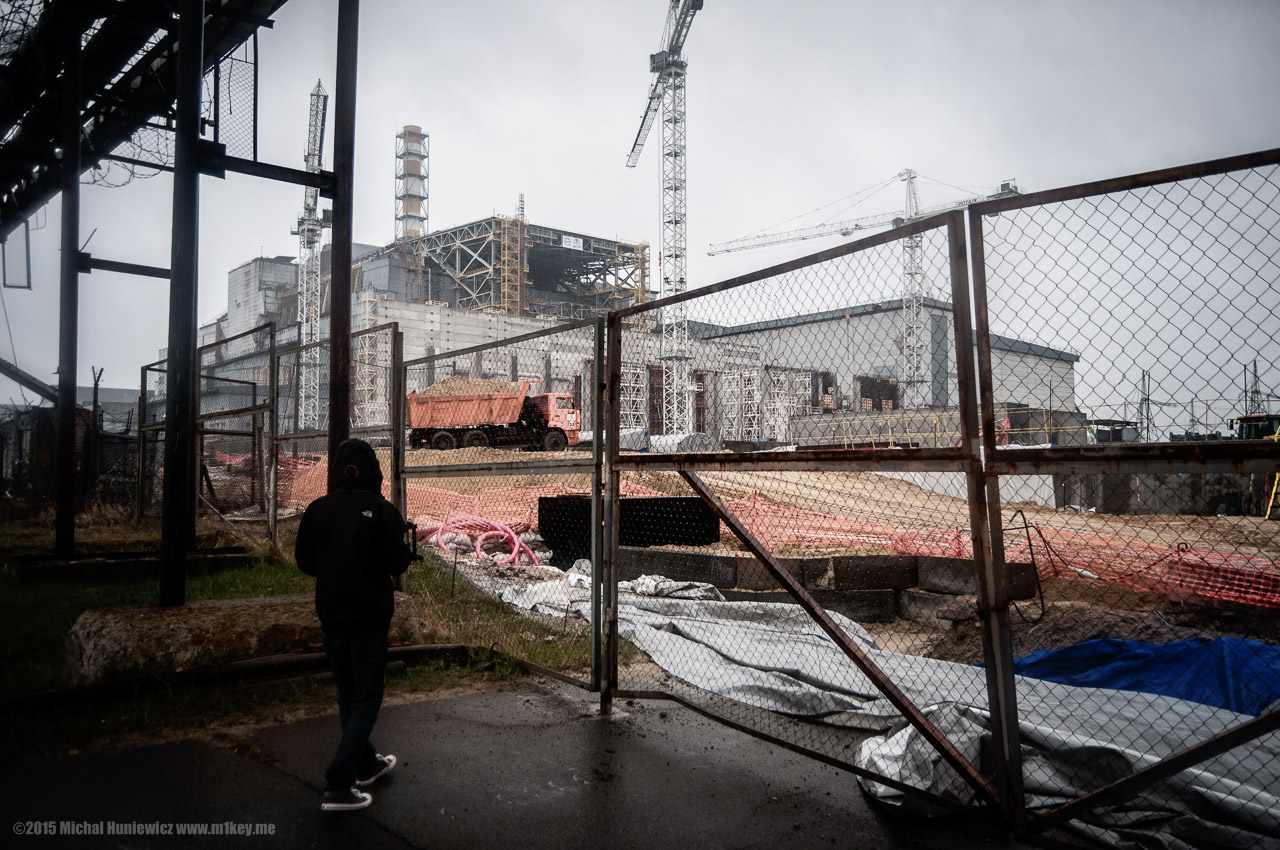
Uh... They didn't really think about it... [10]
It was similar after the disaster - the storage facility was hastily built alongside the unit where the accident occurred, overexposing the construction workers. [1]
Robes
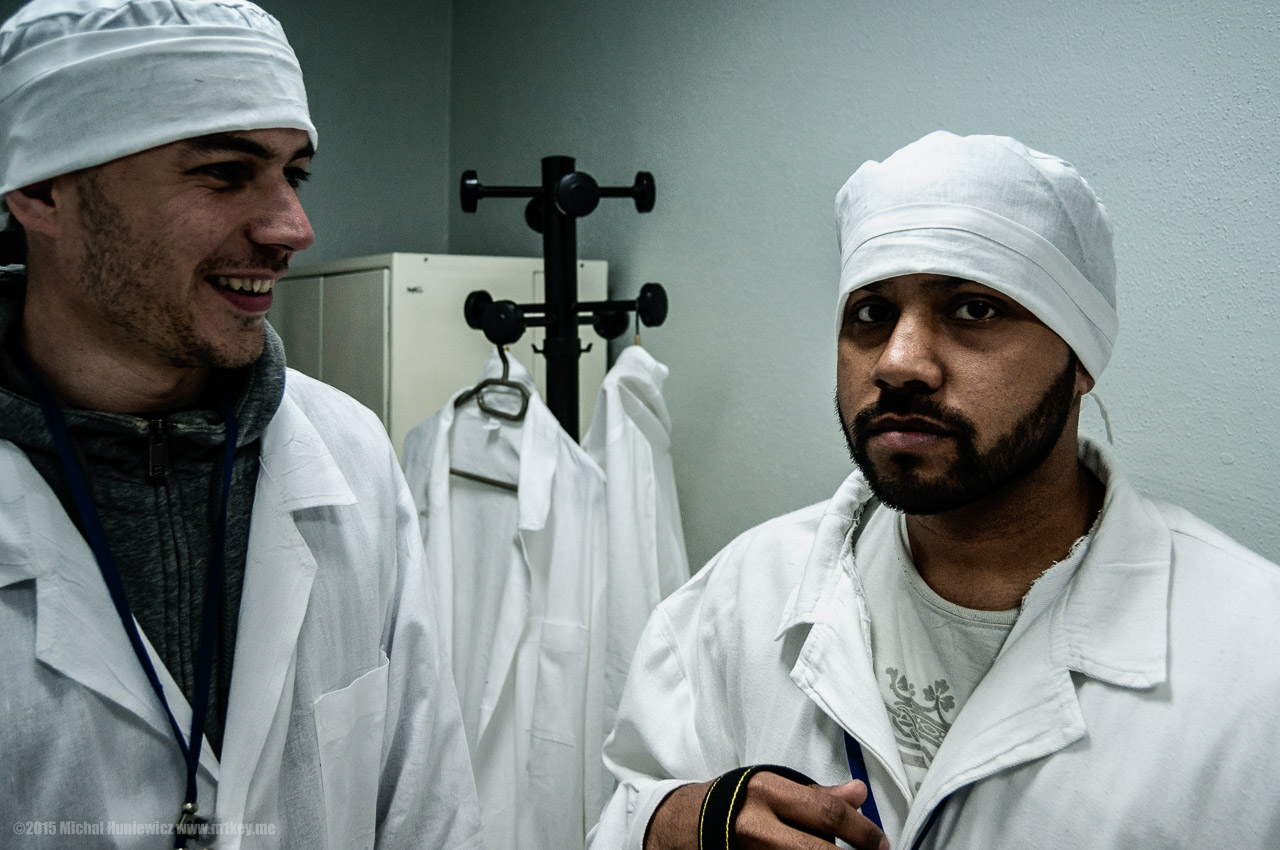
For Ractors 1-3 you will be given a robe and a cap. It protects you against nothing, but you look like a scientist, so it's probably worth it.
For Reactor 4, you will need (aside from a separate permission) a proper hazmat suit that separates you from alpha and maybe beta radiation, but not really from gamma. (What are different kinds of radiation?)
Corridor
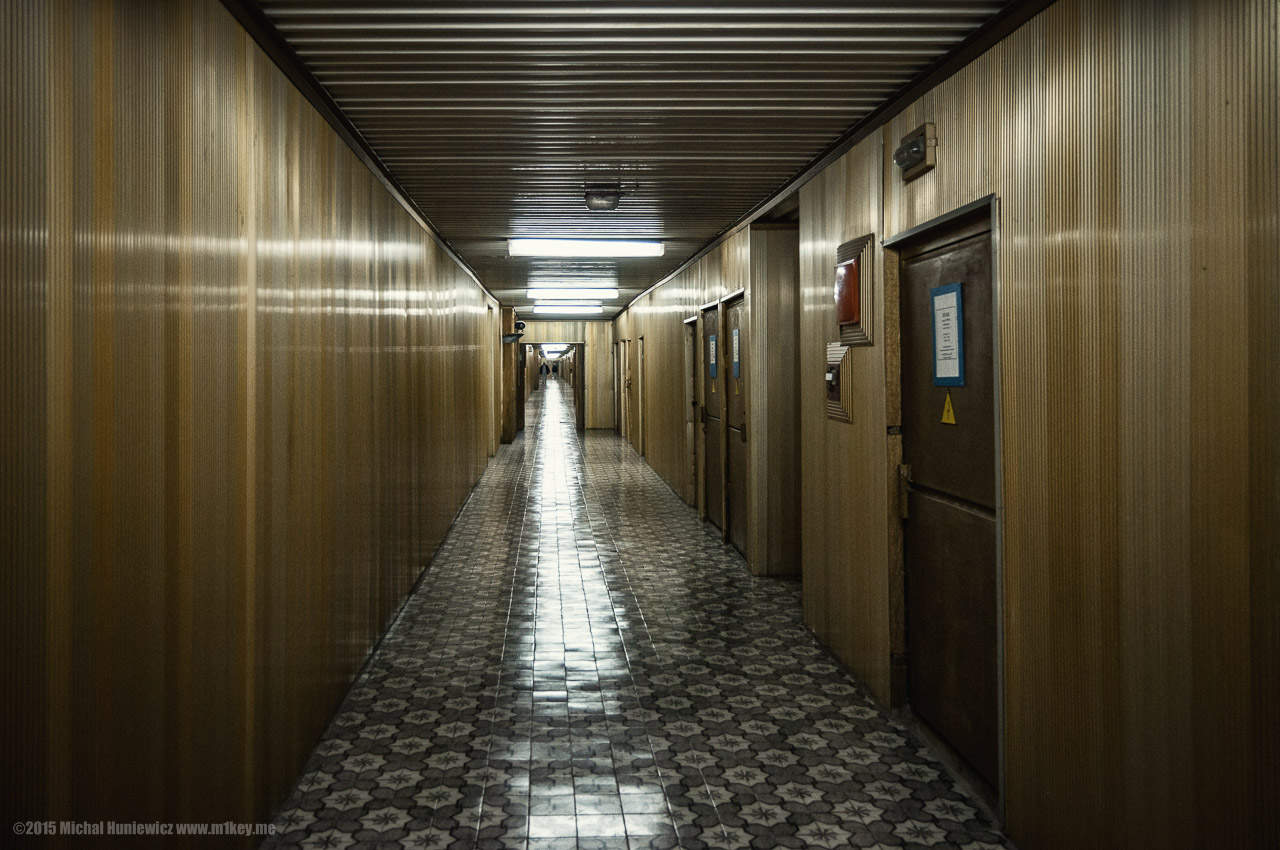
There is security personnel, there are administrative workers, and primarily - the scientists that work on decommissioning the reactors. What you will be able to see at ChNPP depends on what they happen to be doing at the time.
Meters in the Control Room
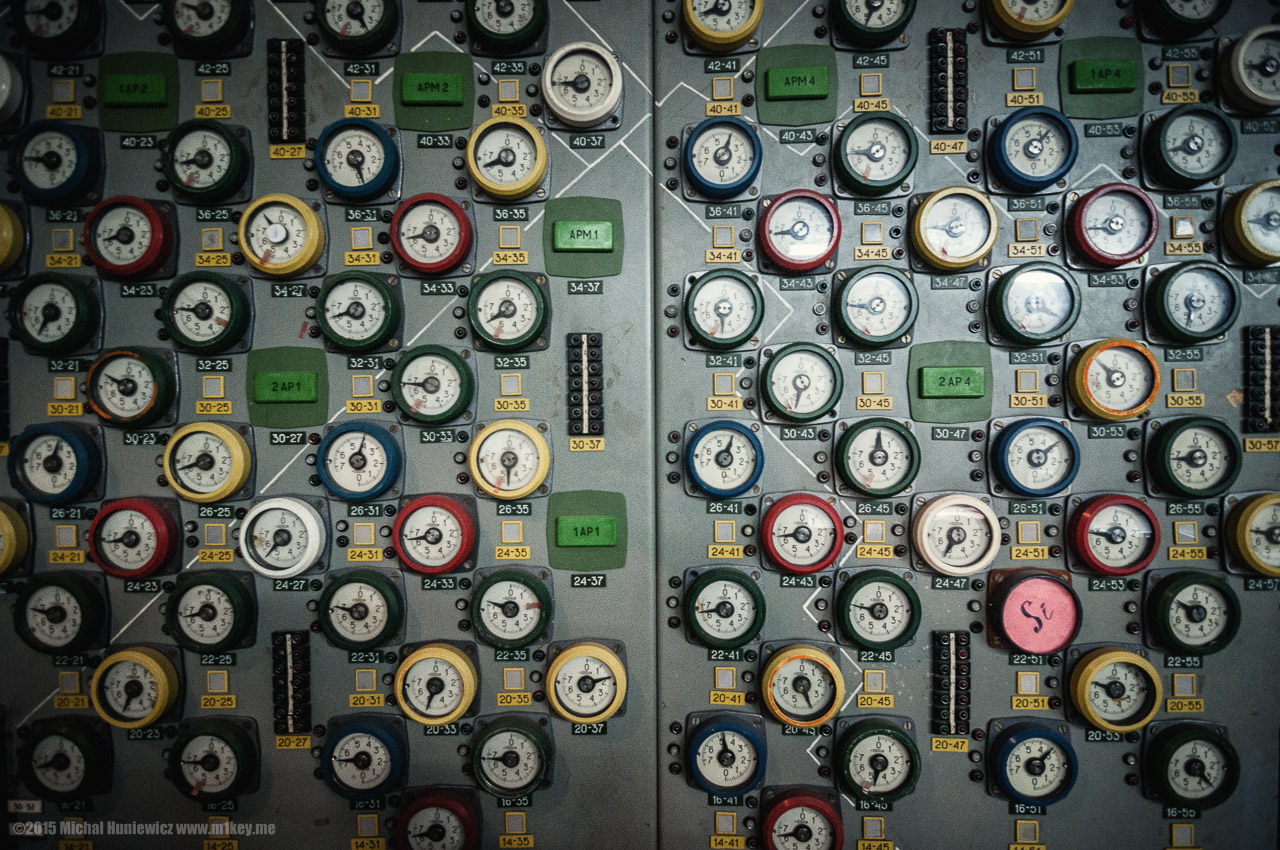
This is a difficult question, and so we asked our guide. The response was: yes, it was a matter of time. Our guide compared modern nuclear power plants to latest passenger planes - they can pretty much fly all by themselves while the pilot is asleep. RBMK, the type of reactor used at Chernobyl, is more like an old car. You cannot lose focus, you cannot fall asleep, you constantly have to steer, react, tweak, and the old vehicle is bound to let you down, anyway.
Still, the Soviet military signed off the design [5]. Mikhail Gorbachev: "The academician Anatoli Alexandrov, for example, used to boast that we could install the RBMK reactor in the middle of the Red Square, as they were no more dangerous than a samovar [large kettle]". [12]
Control Room of Reactor 2
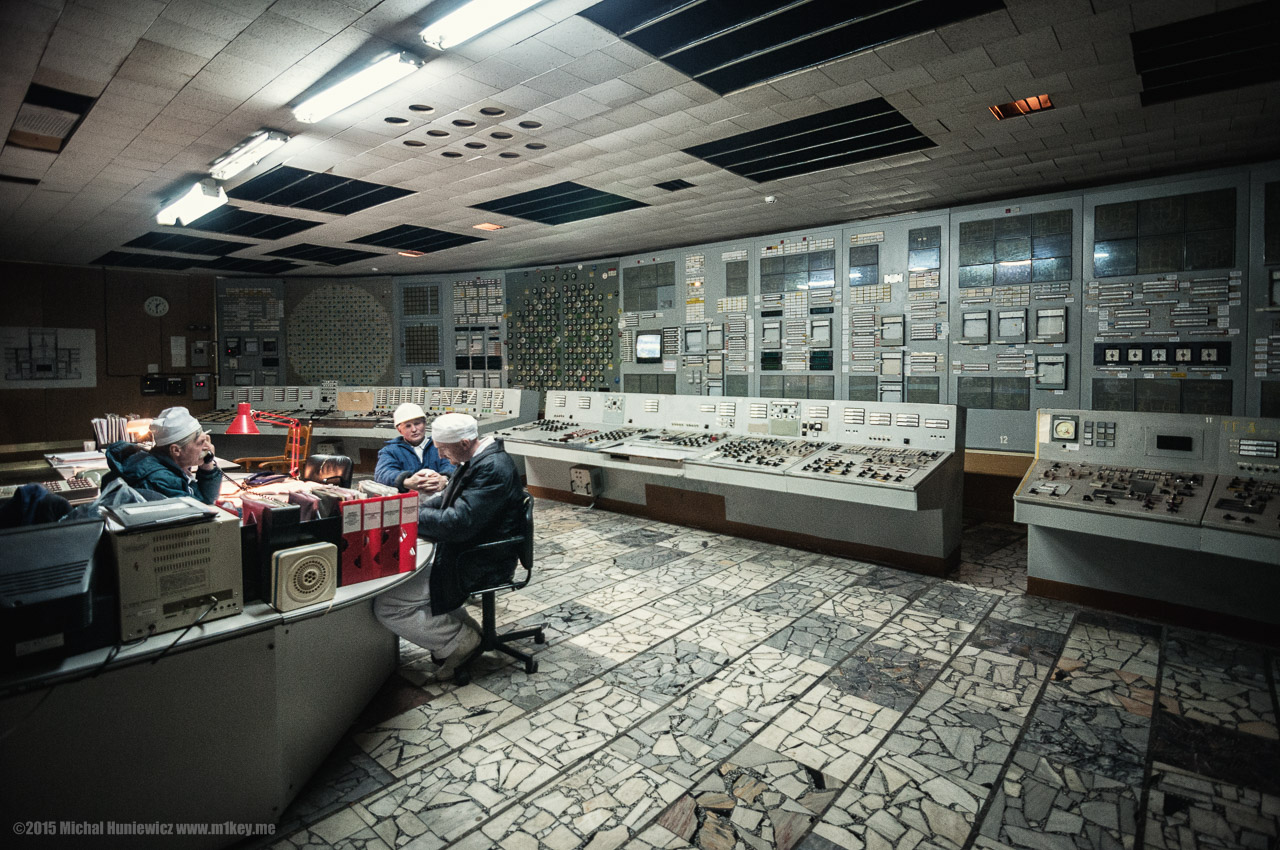
The kind of experiment that was conducted on that fateful night of 1986 had been conducted before, but never with safety mechanisms turned off. [5] This provided a convenient excuse for the Soviets to accuse and sentence the people running the plant at the time. Many of them died, and when their family members would visit their graves, they'd sometimes be abused by people passing by. "Your son almost blew up the world!"[1]
The reality is much more complicated, and I would blame the Soviet system as a whole: design flaws that were kept secret, poor quality materials used in the construction of the plant, poorly educated staff, human errors, human greed (the experiment was to succeed for people to be promoted).
AZ
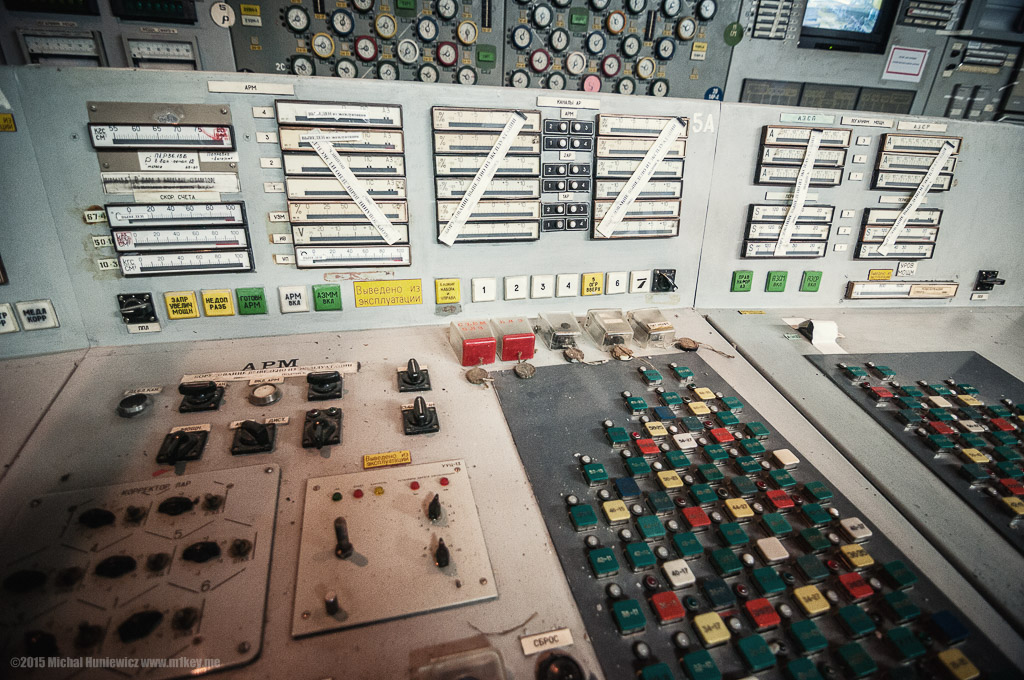
Normally, you hit the AZ-5 button (the second one from the right with a seal). "When the emergency safety system (AZ) is activated, all 211 control rods fall downward, cooling water shoots in, emergency pumps are turned on, and the diesel generators providing reliable electric power are started up. Emergency pumps supplying water from the clean condensate tanks and pumps supplying water from the bubbler pond to the reactor are also activated. That is, the safety systems are more than adequate if they are activated at the right time." [5]
Although there are some doubts about this [13], it appears that after the Chernobyl experiment was finished, the AZ-5 button was pressed by Leonid Toptunov, and that sealed the fate of the Reactor. [14] Toptunov's death of ARS prevents us from knowing more, but what we do know is that together with another relatively inexperienced operator, Akimov, he opposed conducting the test - they could have saved the plant from the disaster, but were overruled by Anatoly Dyatlov. So they hit AZ-5 and the first explosion occurred. Dyatlov got as much as 5.5 Sv, but survived. He wrote a book, and I think there is an amateur effort going on to translate it into English.
Smells of the Reactor
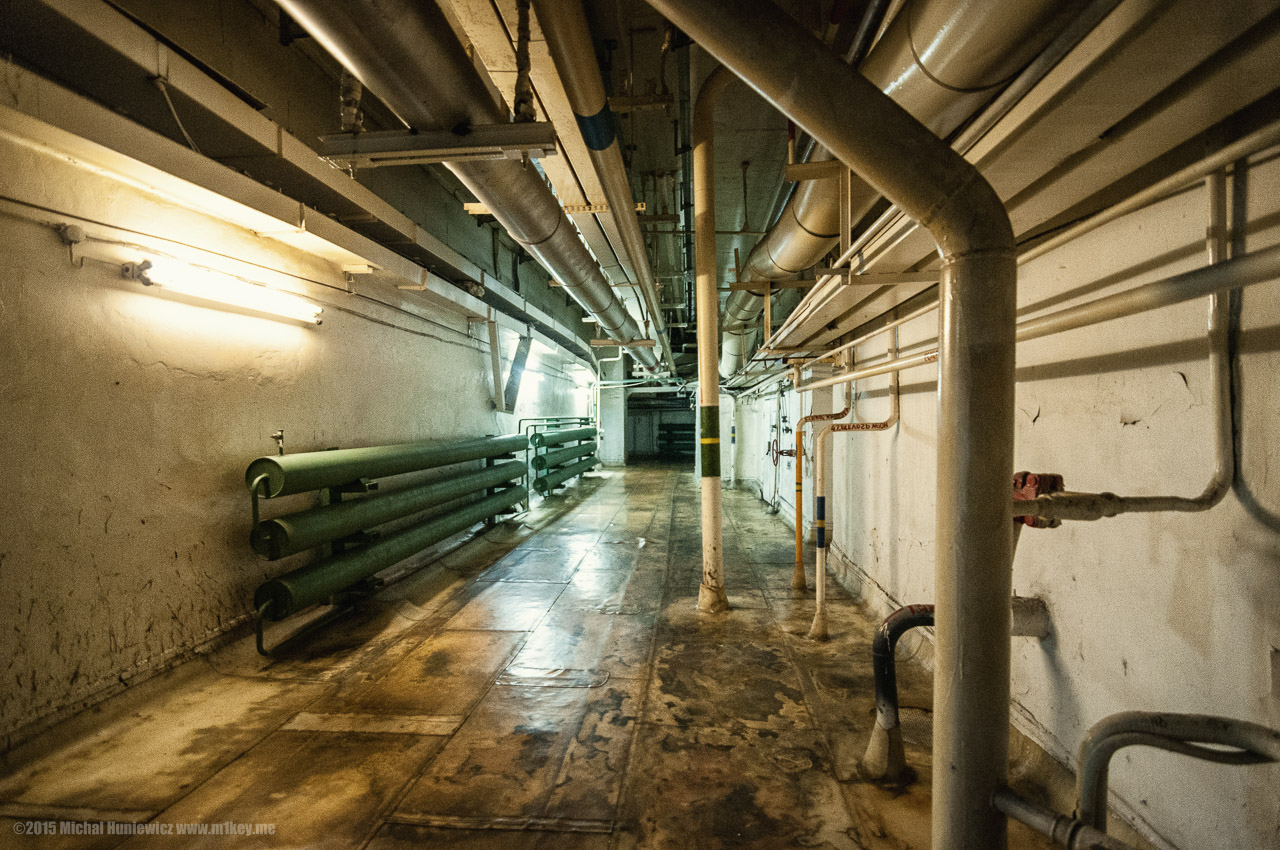
Initially, people who lived in Pripyat, were not alarmed, because they were used to cannon-like booms coming out of the plant (!). [5] Those inside the plant thought it was an earthquake or an American bomb, but they did not consider it could be a human-caused disaster.
"We did not think that death could be so beautiful", said someone from Pripyat, as there was a 2 km high blue flame coming out of the reactor, which had by then turned into a volcano. The smell around the crater was that of freshness, like after a storm - that's because ozone was in the air. In fact, that massive flame burnt a hole in the ozone layer. [16]
Communication
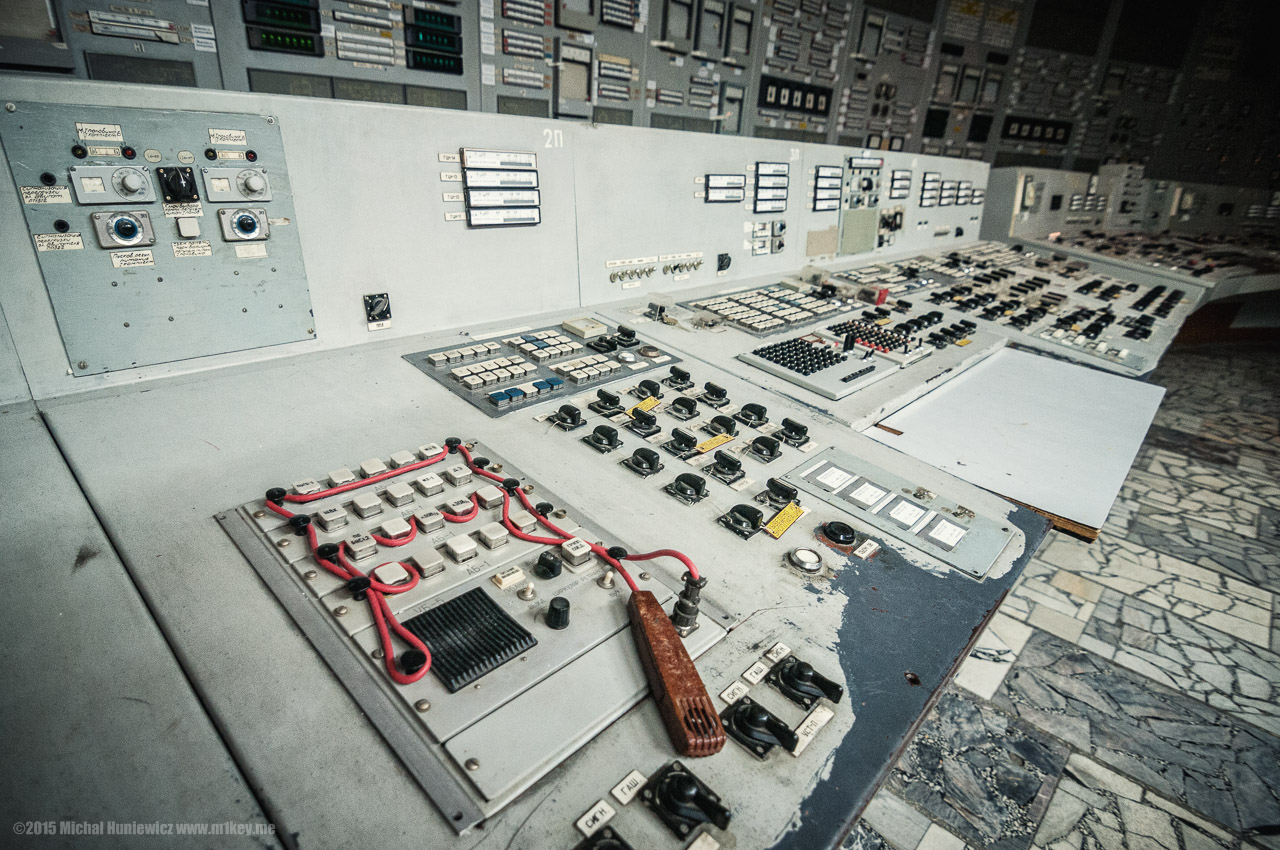
Rather heroically.
As an example, Aleksandr Grigoryevich Lelechenko in order to spare his younger colleagues a radiation exposition he himself went through radioactive water and debris three times to switch off the electrolysers and the feed of hydrogen to the generators, then tried to supply voltage to feedwater pumps; after receiving first aid, returned to the plant and worked for several more hours. Having received 25 Sieverts (!), he later died in a Kiev hospital. [15]
Khodemchuk
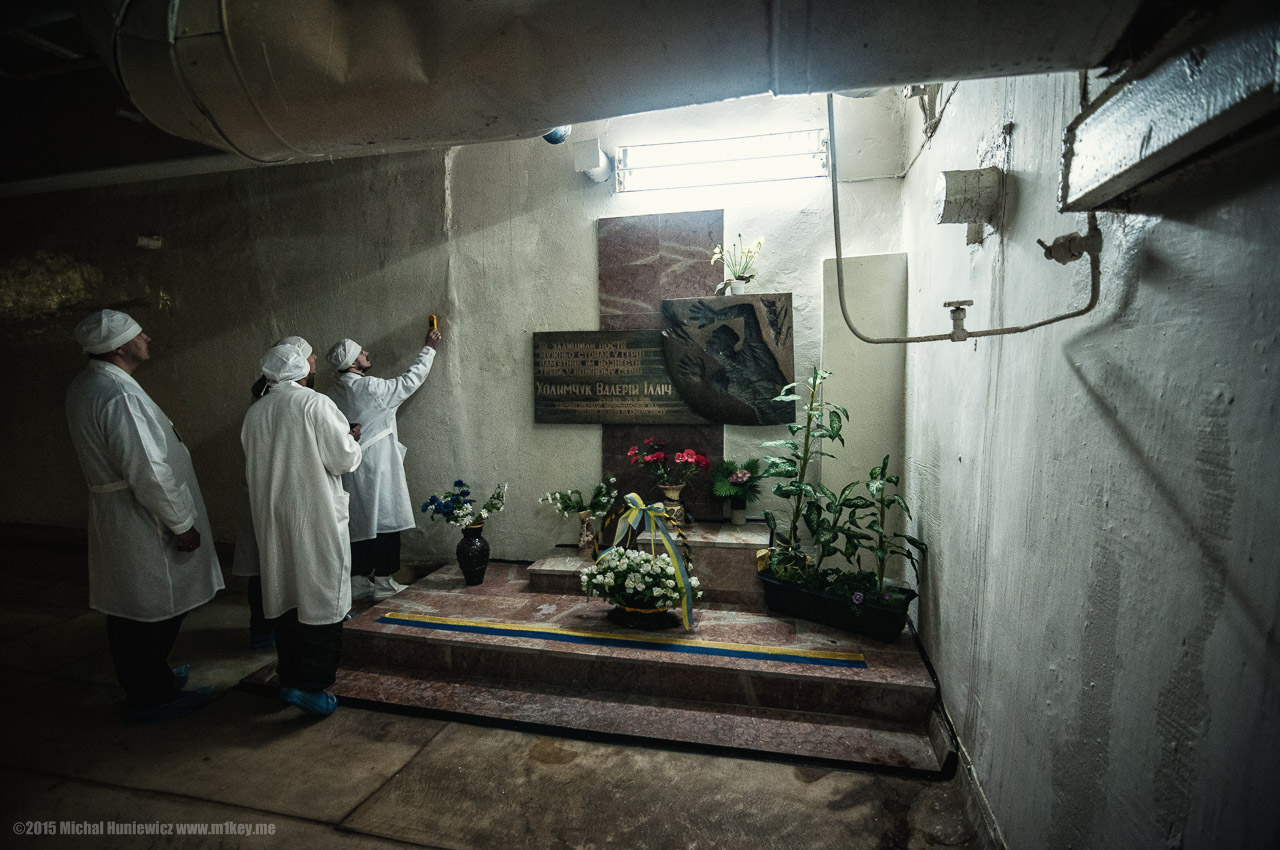
There was one very serious mistake they made in the assessment of the damage, which was to have fatal consequences. That was assuming the damage was not as bad as it was, and that's despite having several people go to inspect it, some of whom died from overexposure. Because of this assumption, water was pumped to cool the (in reality non existent) reactor, spreading radioactive waste around the facility, and creating the possibility of it leaking into the ground, contaminating waters, and later Kiev. For days, some believed they could still restore the reactor. [5] While it is easy to blame them, it is important to remember they did not even have a working dosimeter capable of telling them how bad the situation was. [5]
In the photo, memorial to the first victim of the disaster, Khodemchuk.
Another Corridor
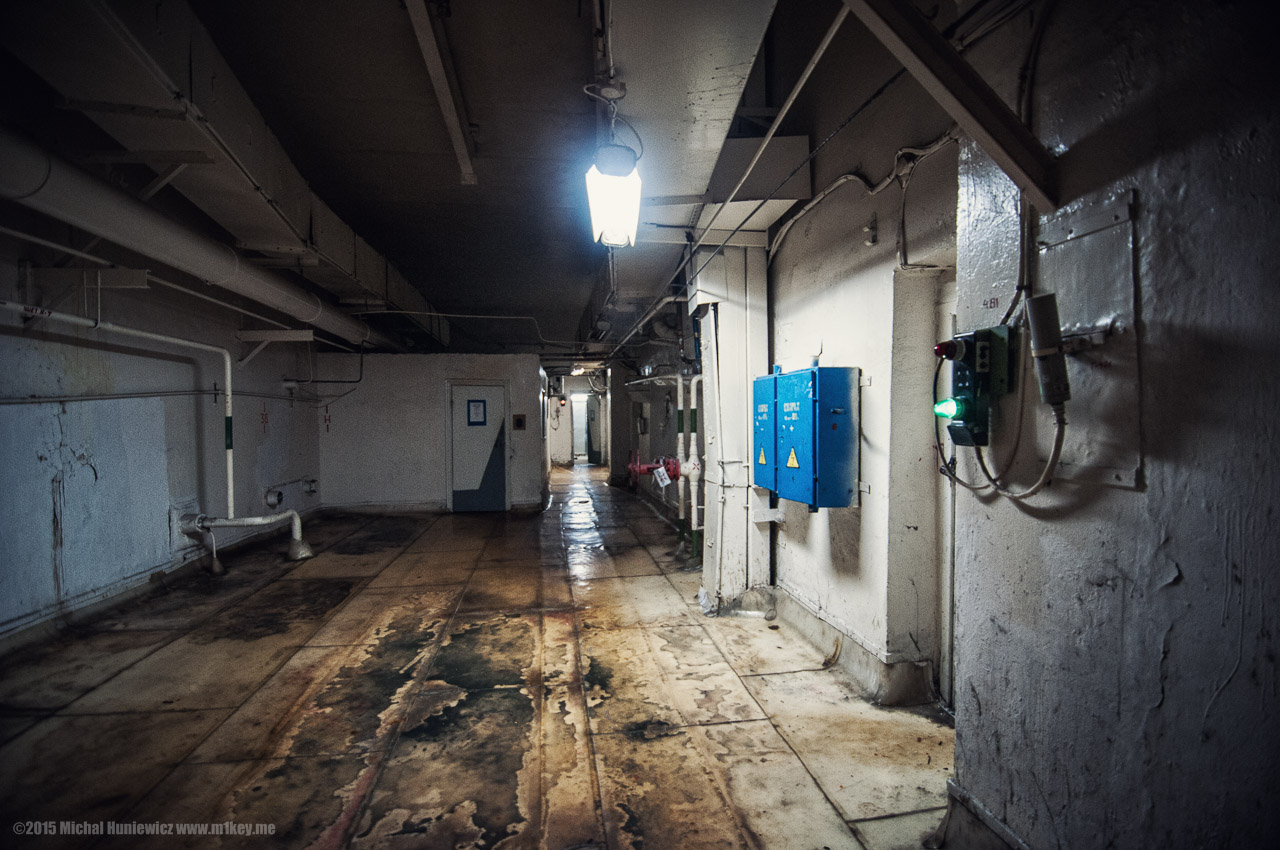
"[He felt] hot radioactive tentacles licking at his face" [5]
- Some reported strange, metallic aftertaste in their mouths, that never went away.
- Others felt terrible excitement at the limit of their nerves, the nuclear fury of the nervous system.
- Later, nausea and vomiting begins.
Pumps
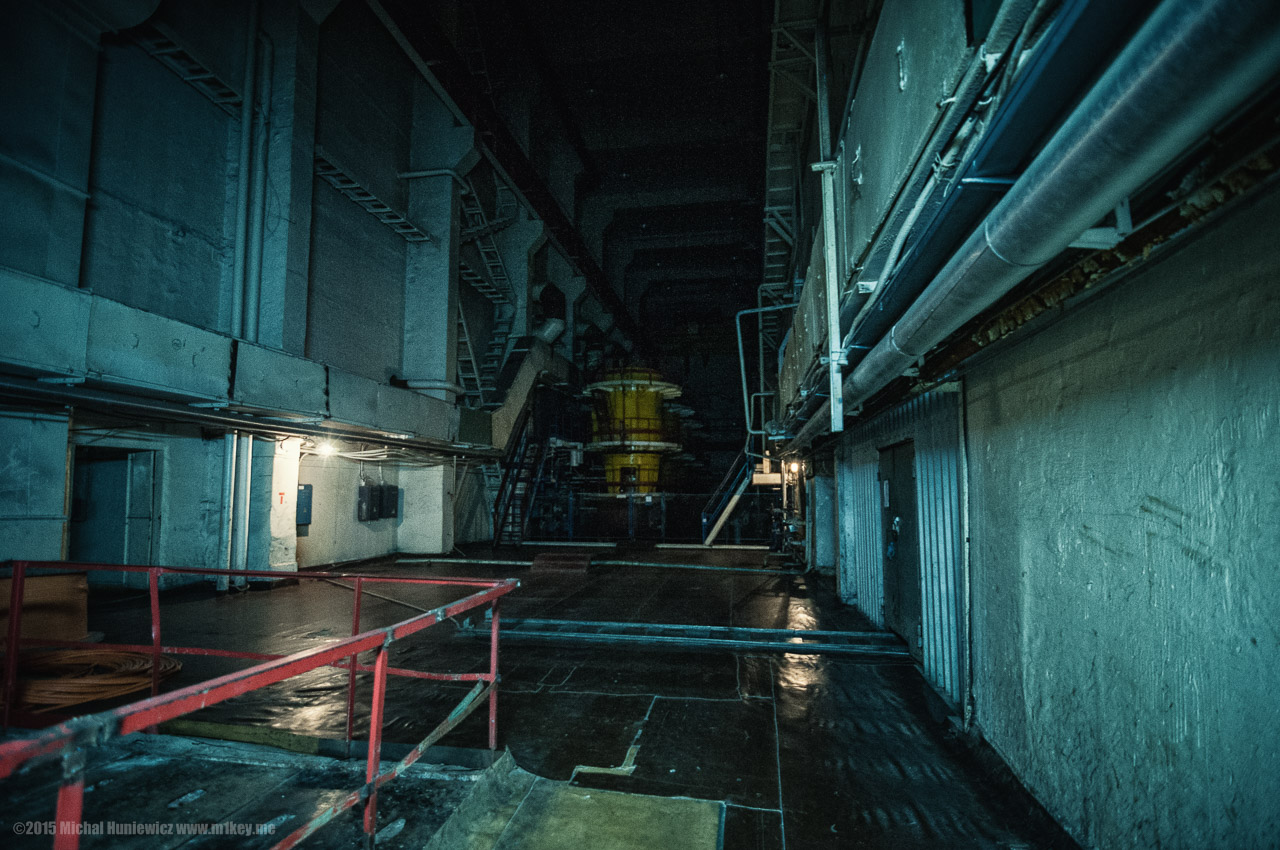
- Ukraine was quite lucky, as by the time the explosion happened, the rains had ended. Otherwise the radioactivity would have ended up in the Pripyat and Dnieper rivers.
- The world was lucky, because it might have been a nuclear explosion after all. Thanks to the skills of a Russian pilot Mykola Melnyk, they found out among other things that the world was not in danger of a nuclear explosion, after all. See the photo from his helicopter down the Reactor.
- Nuclear fluid could have leaked into the ground, poisoning the waters.
Nuclear Waste
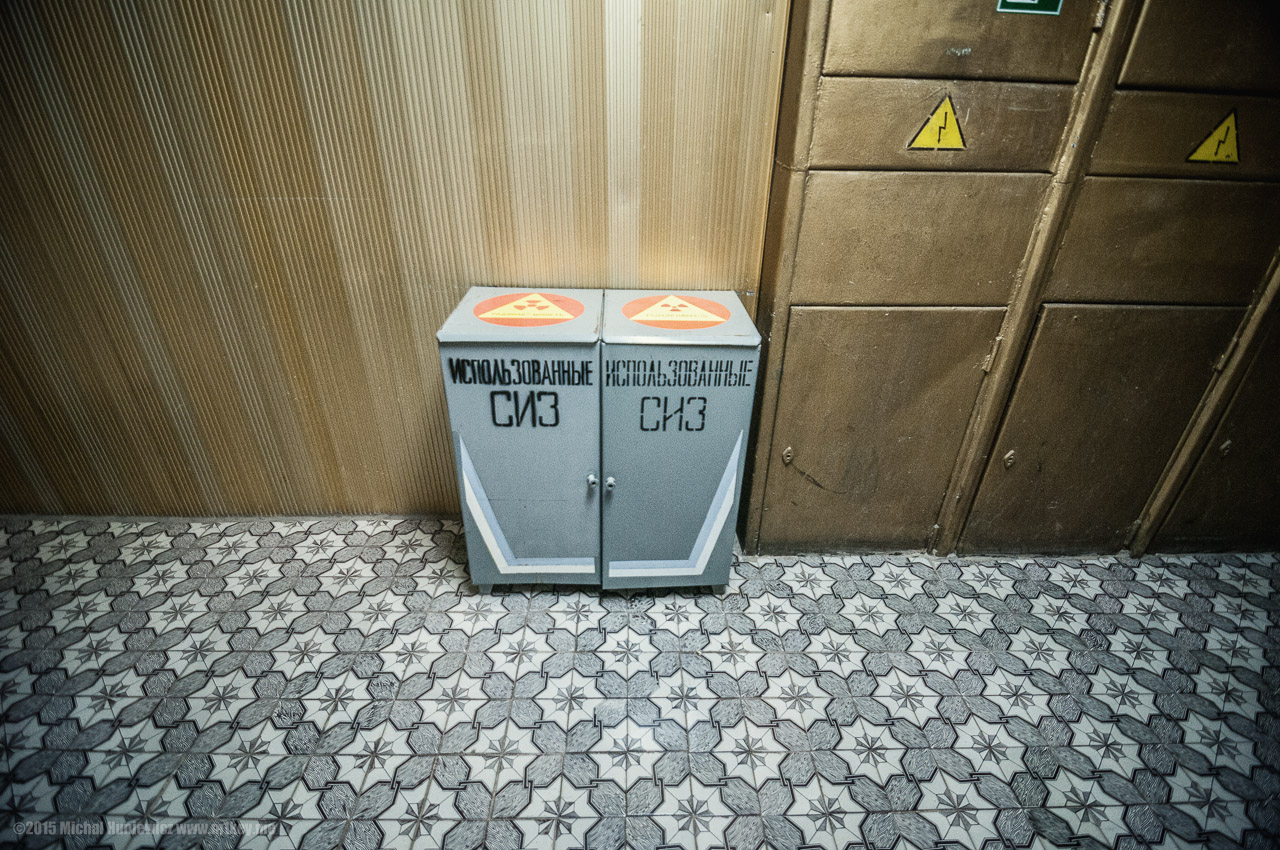
As hot nuclear was burning its way down the plant, towards the ground, a decision was made to build a cooling slab under the reactor. Coal miners were used for that purpose, and they were exposed to huge radiation levels. In the end, the effort turned out to be unnecessary, as the fuel did not burn through, and the man documenting their work, Vladimir Shevchenko, died of overexposure. [25]
Control Room Panels
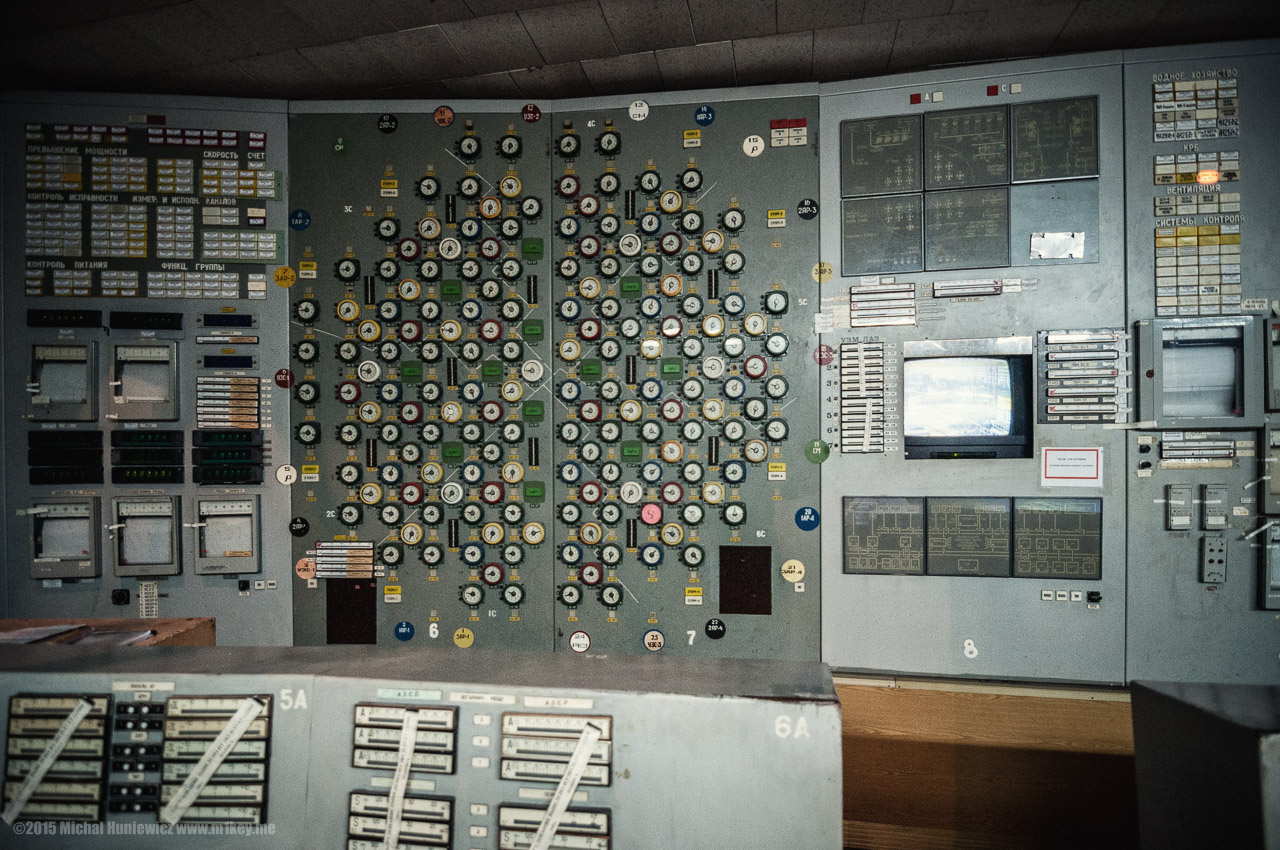
After the disaster, an American satellite took this photo which clearly shows a nuclear disaster.
Going Down
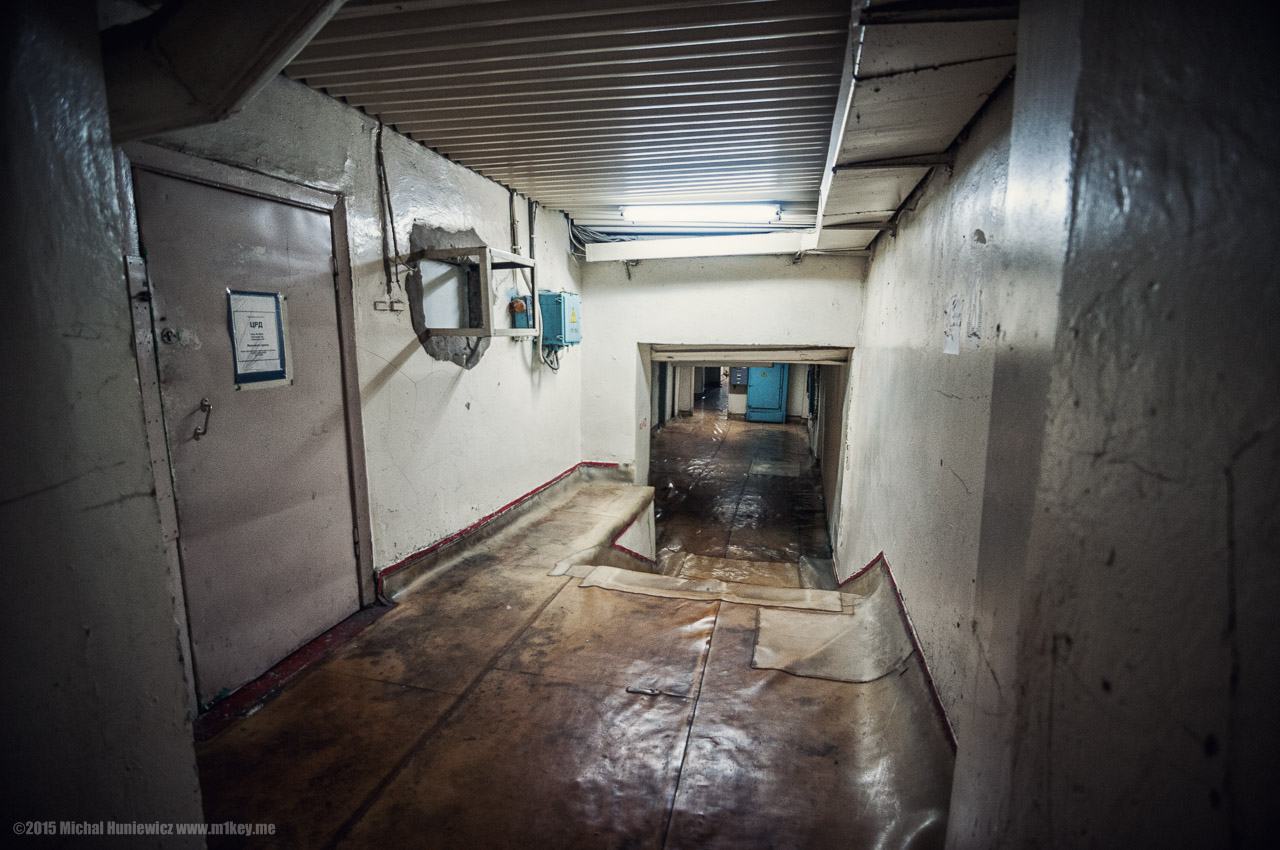
National power grid.
Outside of the Plant
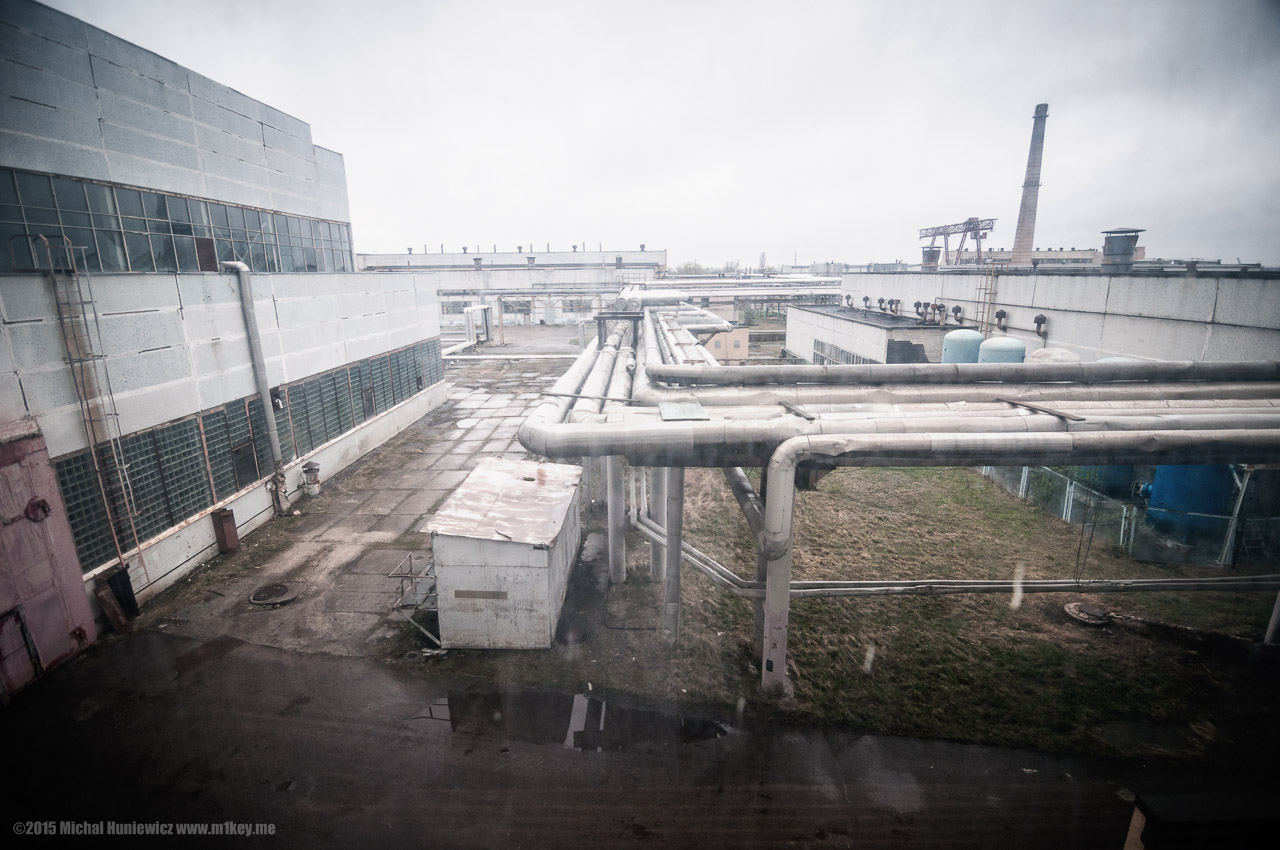
Yes, it was still dangerous, and the flag did not last very long due to radiation, and other people had to replace it. The reward was - a bottle of Pepsi and a day off. [20]
EDIT: Previously, I said the red flag was a flag of the USSR, but it was just a plain red flag. Thanks to Grabisz [27], and you can watch a video of the flag being installed.
Outside of the Plant
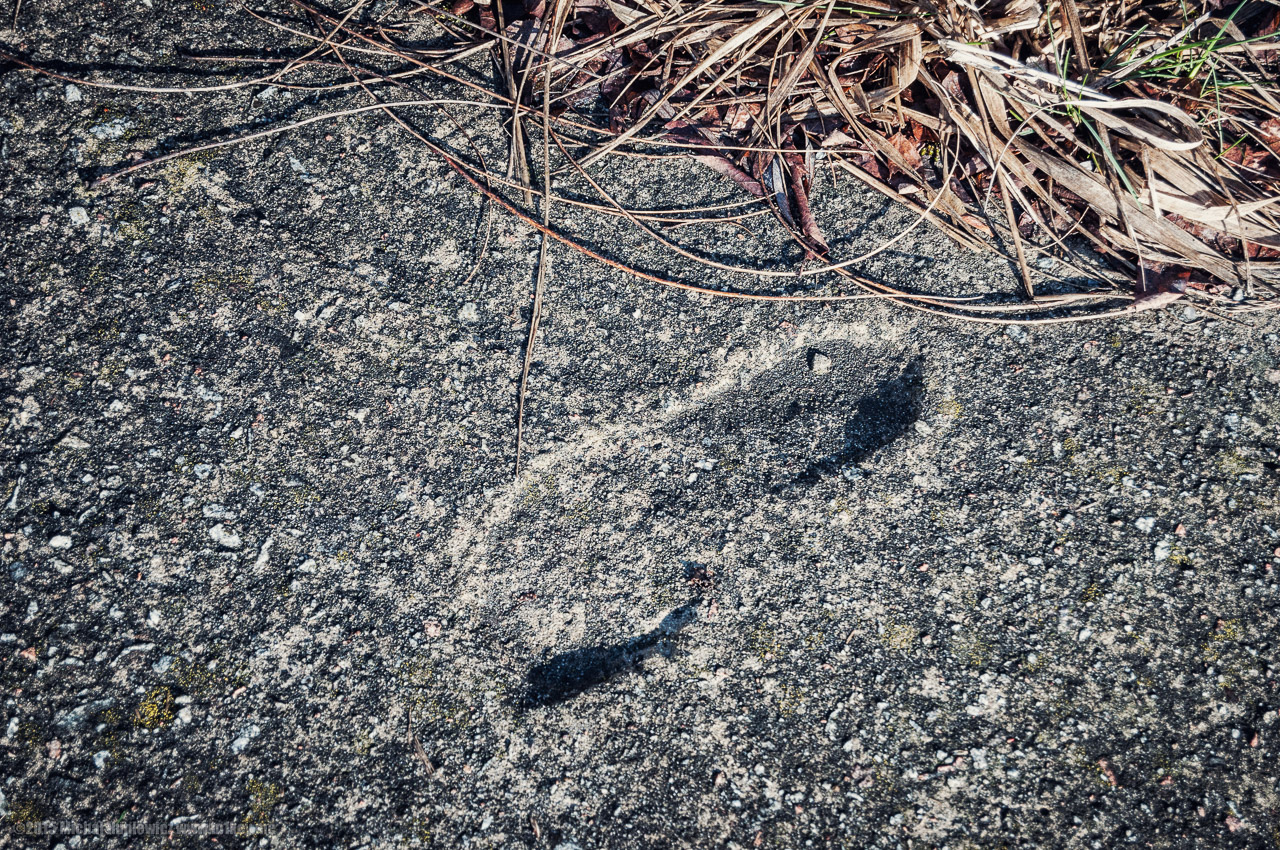
Here's a true story that illustrates the approach of many Soviet people at the time. Older man somewhere in the USSR watches a Japanese robot used by the Soviet Army being destroyed. The man's reaction: "What the...! Are they just wasting expensive equipment like that?! Have we run out of people or what?" [21]
Outside of the Plant
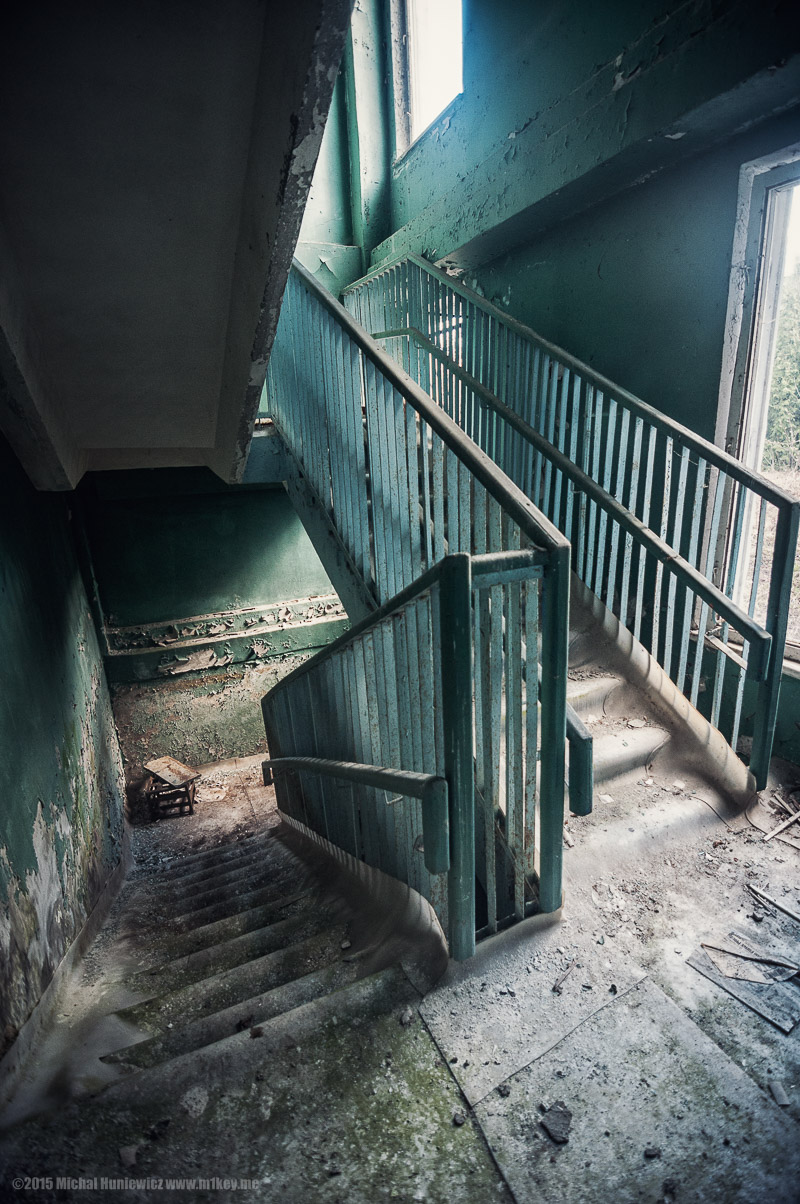
No, the contamination map reflects the weather of those days, as the winds were moving contaminated particles around.
Canteen
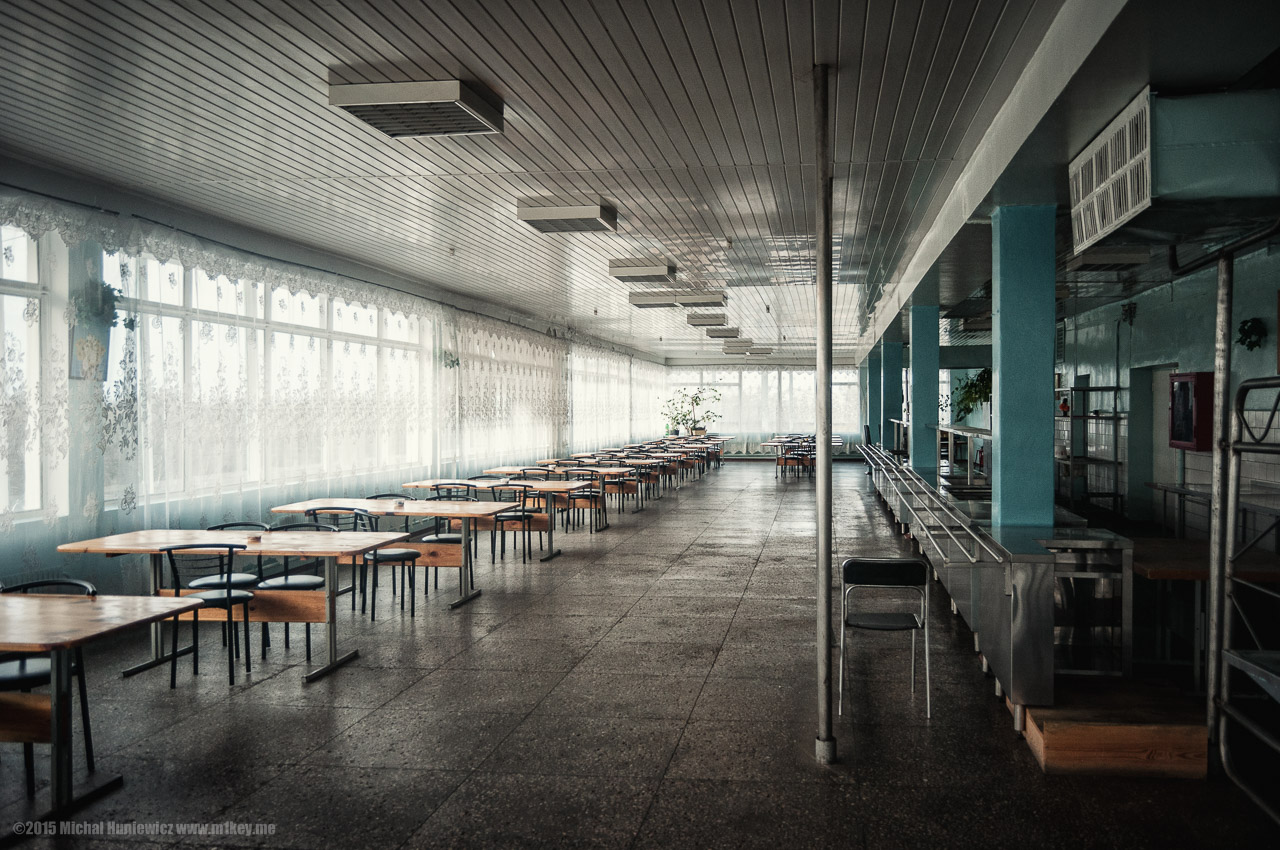
Yes, there is more than one place where you can get lunch. Careful though: vegetarian soup turned out to be meat soup with the meat fished out.
Pripyat Blocks
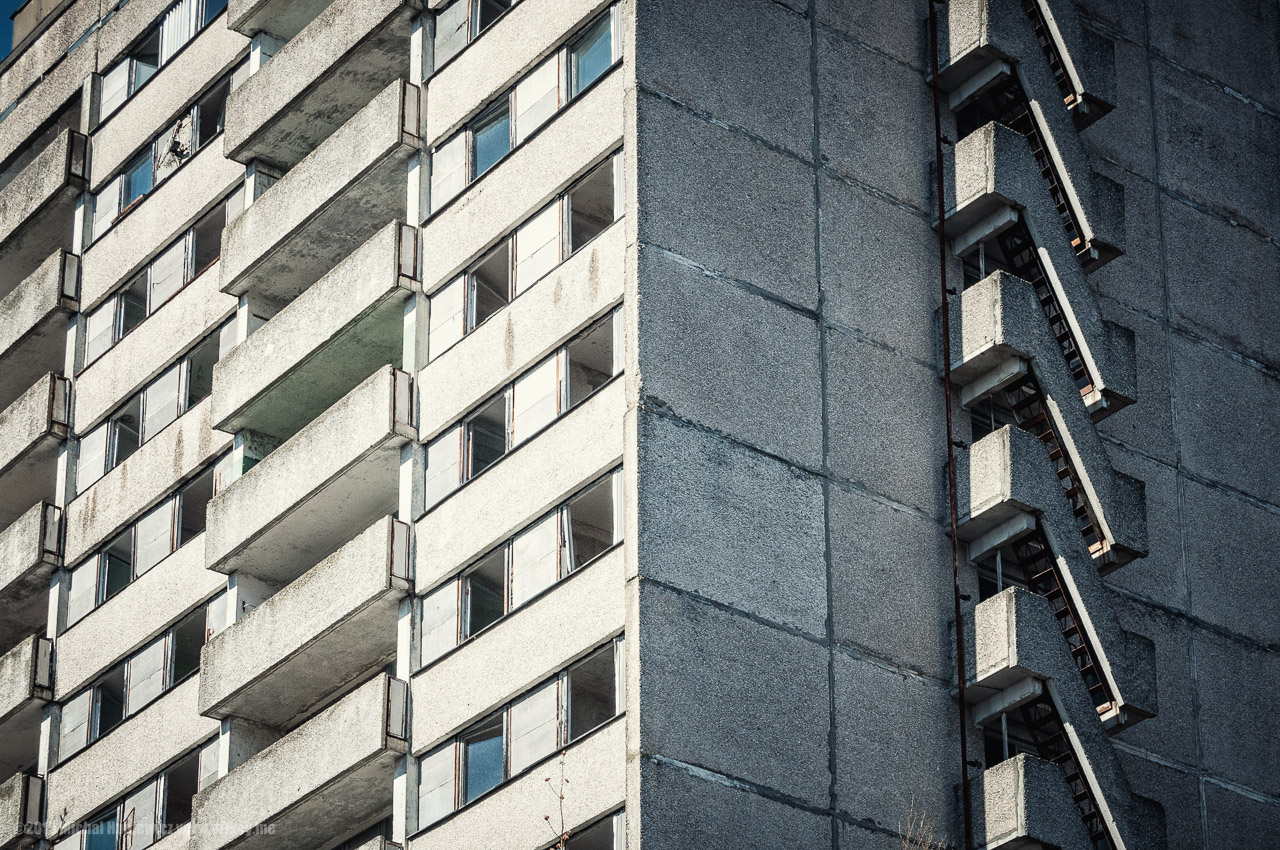
No.
"'You want to go for twenty-five days to a [chemists] camp near Minsk?' And I thought: Why not. [...] 'Are you kidding?' says the captain who came with us, laughing. 'Twenty-five days? You'll be in Chernobyl six months.'" [1]
At the River
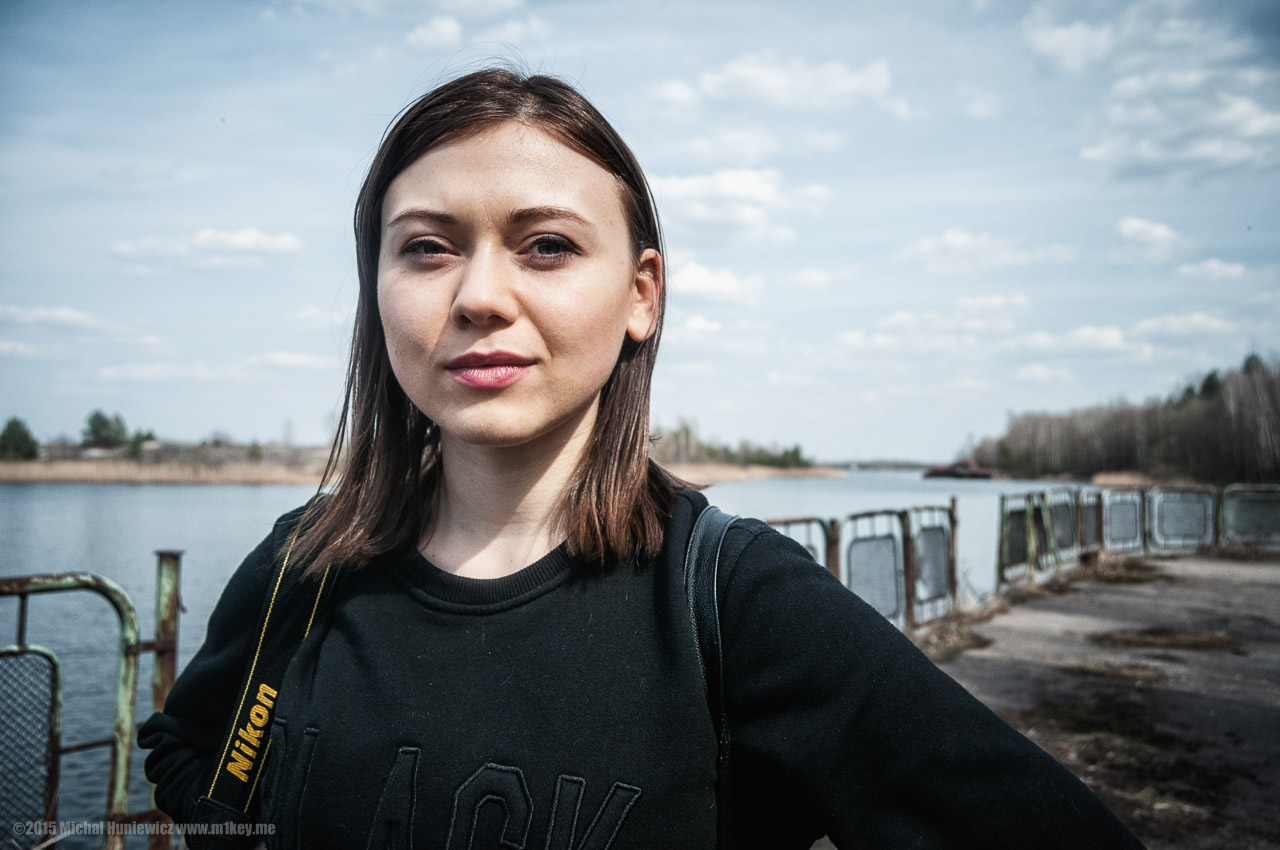
"I was close to something then. Something fantastical. I don't have the words to describe it. And the words, 'gigantic', 'fantastic', they just don't do it. I had this feeling... What? I haven't had that feeling again even in love." -- Aleksandr Kudryagin, liquidator. [1]
Nature
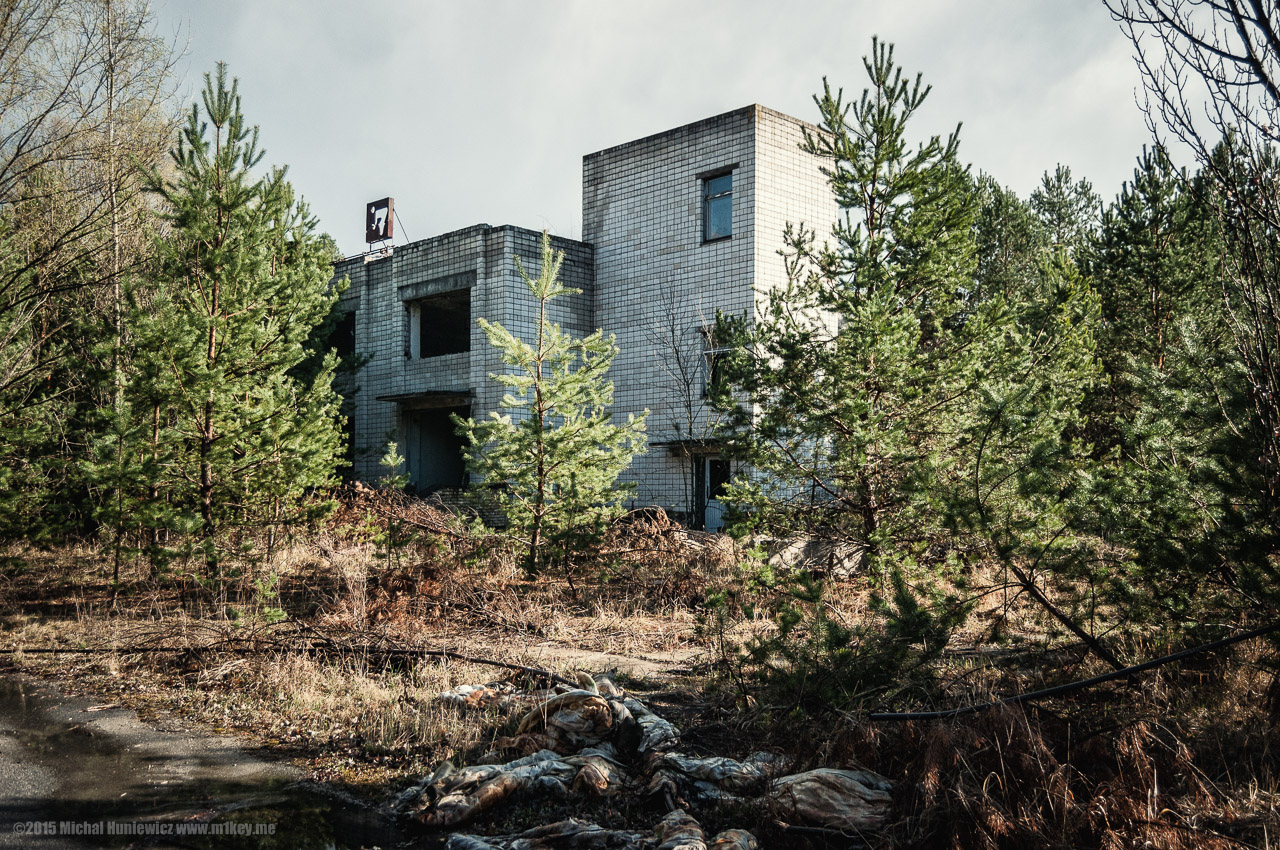
It turns out that human-planted trees and bushes stood no chance against wild nature that was unleashed when the people left.
Brilliance
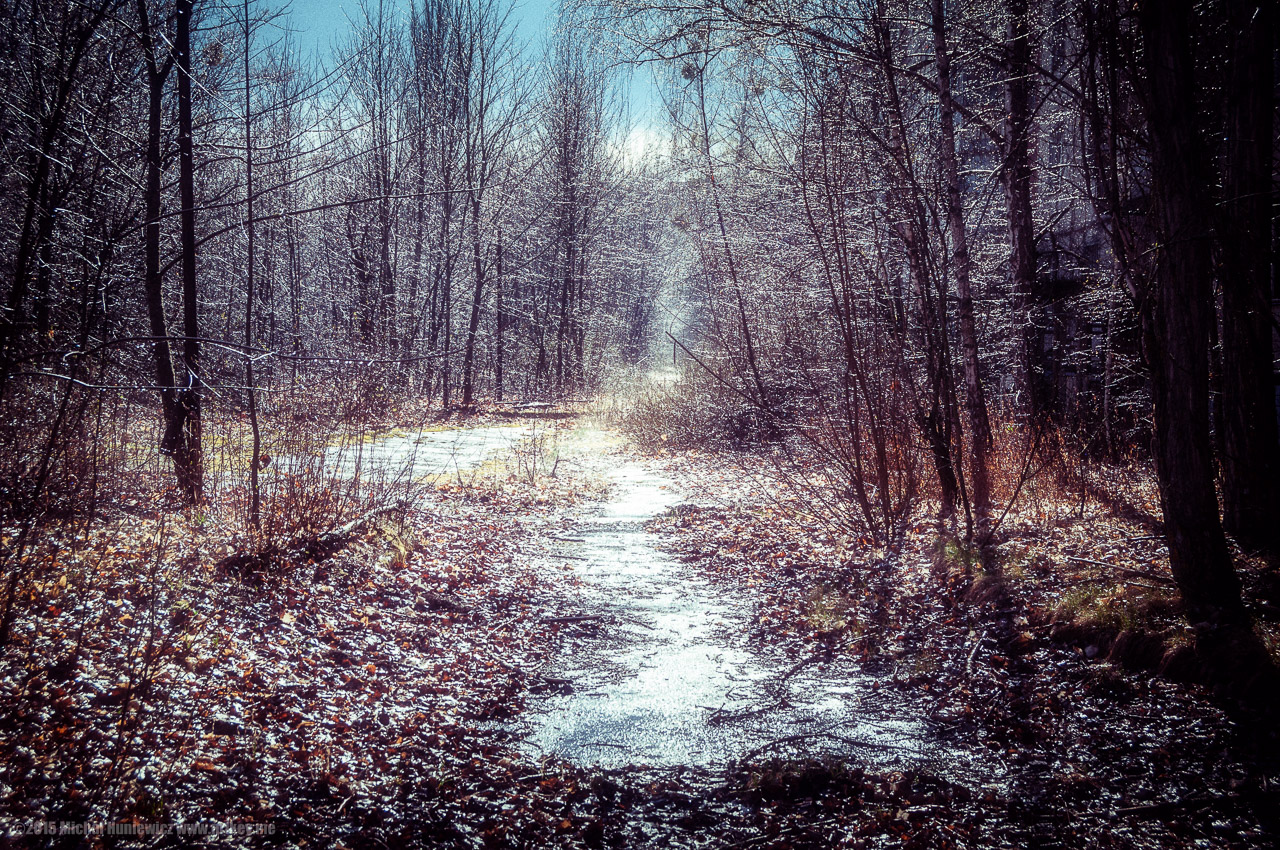
Actually, not so much. There is a lot of eerie noise when the wind is blowing, opening and closing doors and windows.
Stage
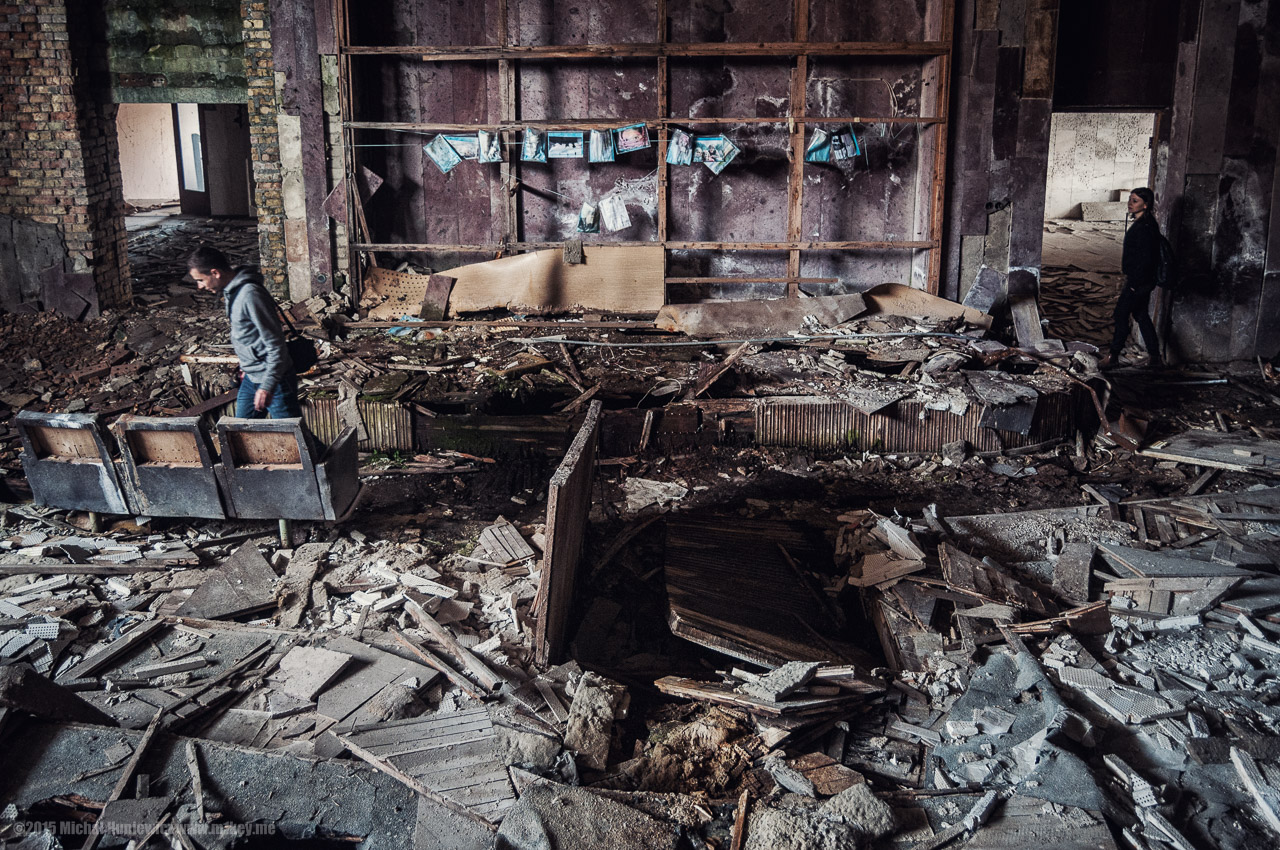
Yes. One example is the soldiers pretending they were scanning people's houses for radiation in exchange for vodka - despite the fact they had no devices to detect radiation, and would use a stick with wire around it to fool the people. [1]
Counter
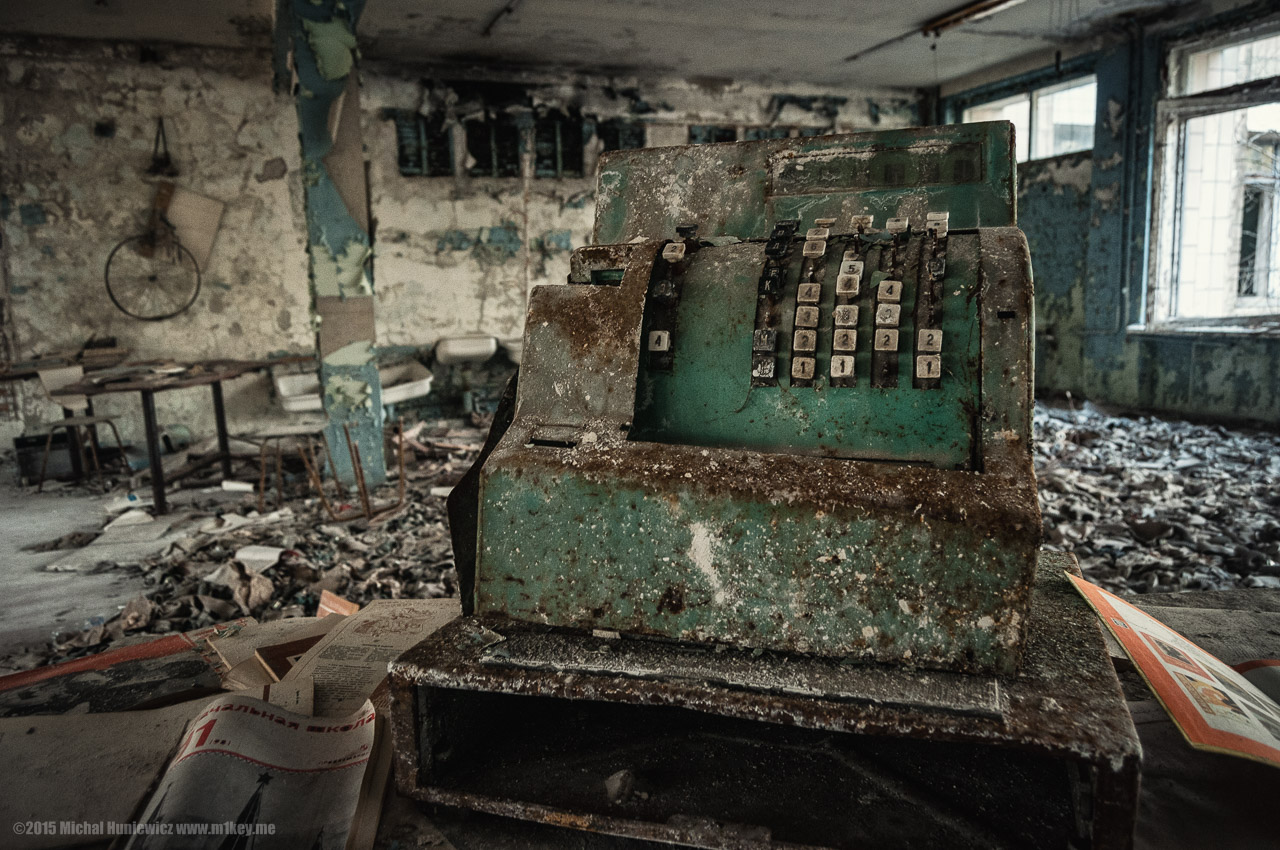
Yes - when milk from certain places was deemed unsuitable for drinking by the population, milk labels were removed. Some people bought more expensive meat, assuming it would be safer, but it was the more expensive meat where the contaminated meat was used, as someone assumed fewer people would buy an expensive product. [1]
Piano Shop
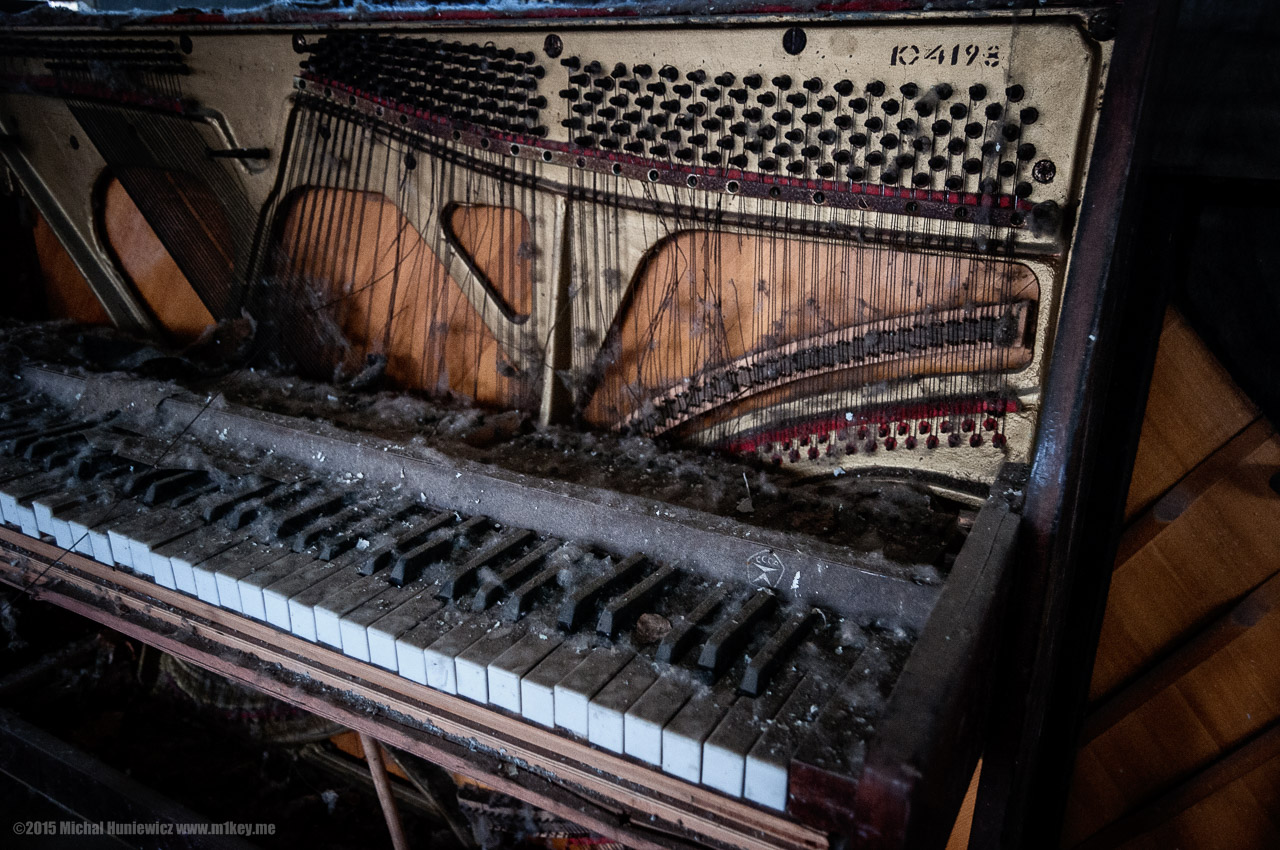
Yes, with terrified crying women inside. [1]
Swimming Pool
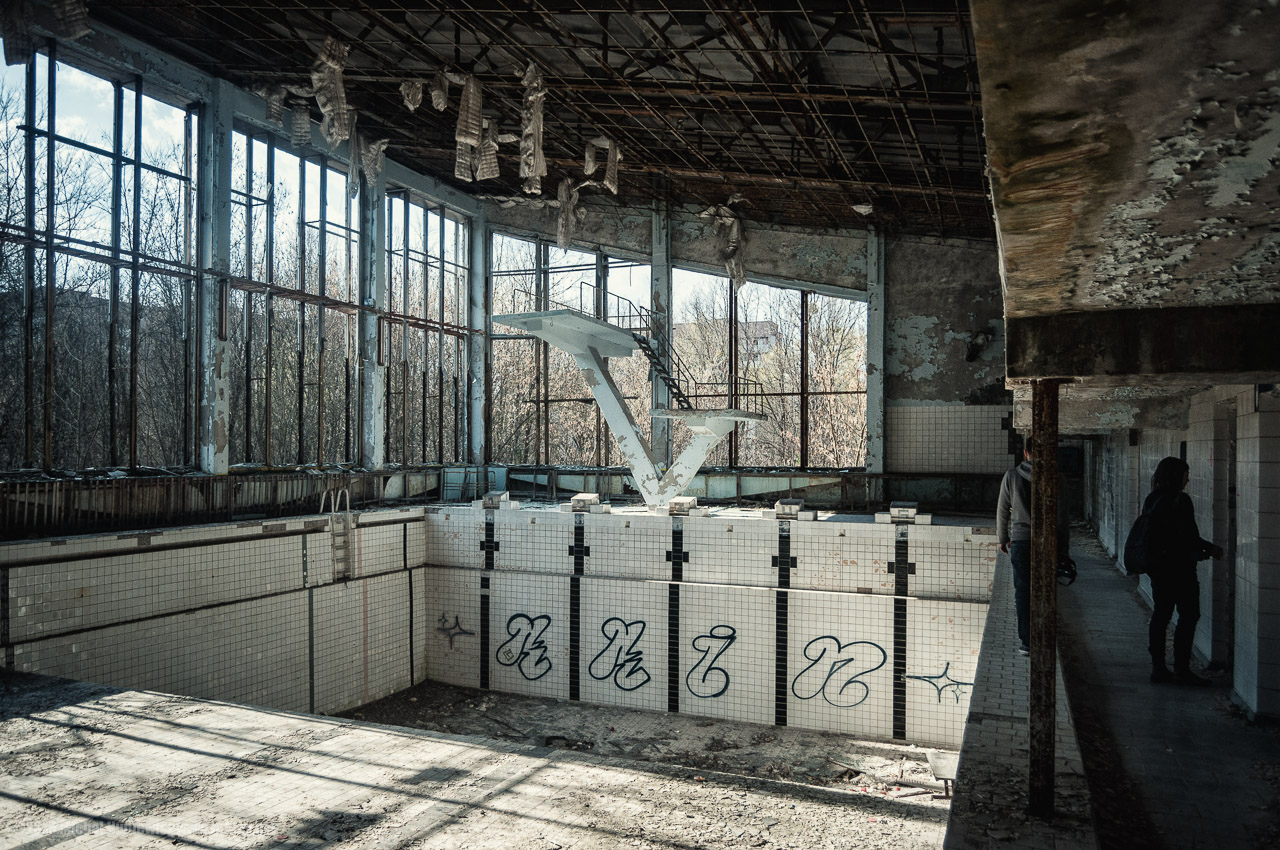
The US had its own nuclear accident, the Three Mile Island accident, although on a smaller scale. [23]
Toys
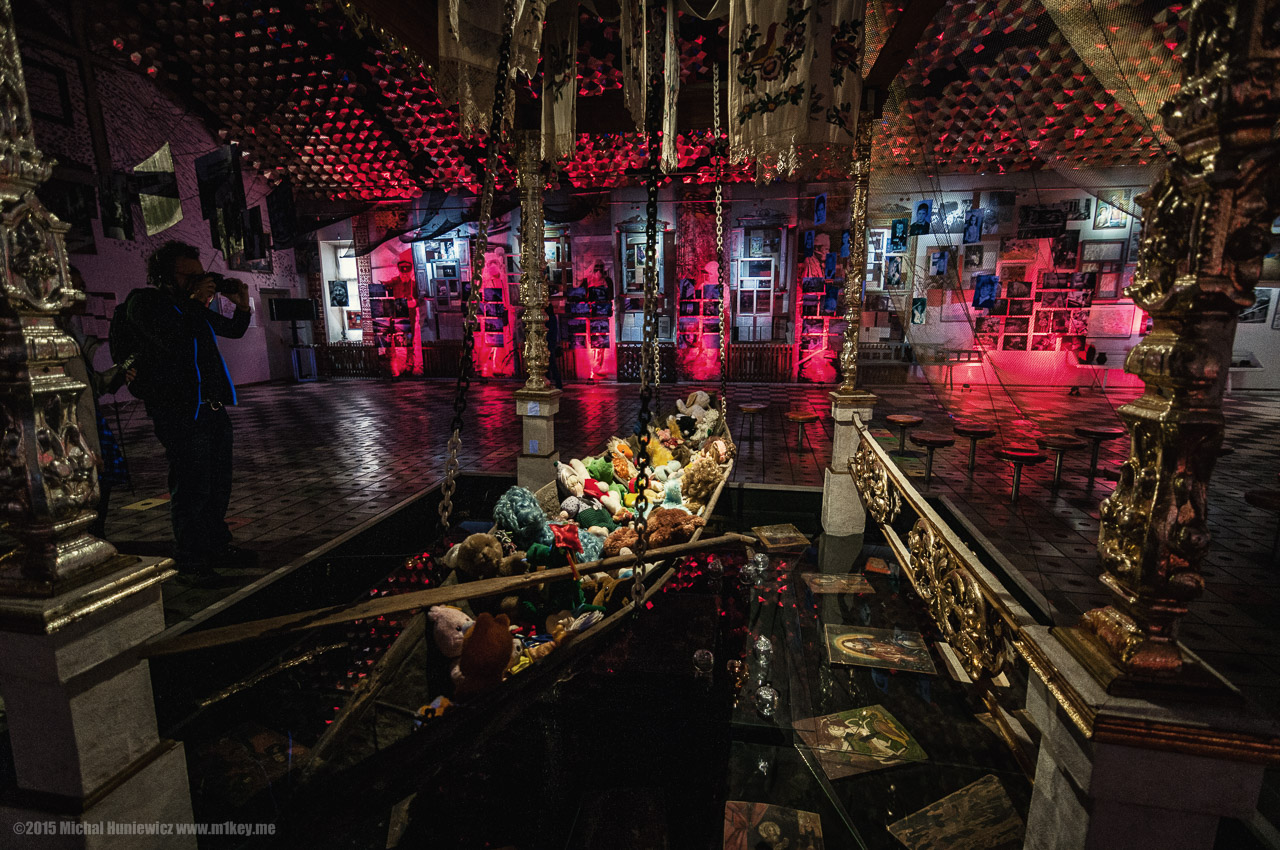
Yes, but the only possibility was to leave the area unnoticed, and hide in the countryside as far from the Zone as possible. [1]
Police Station
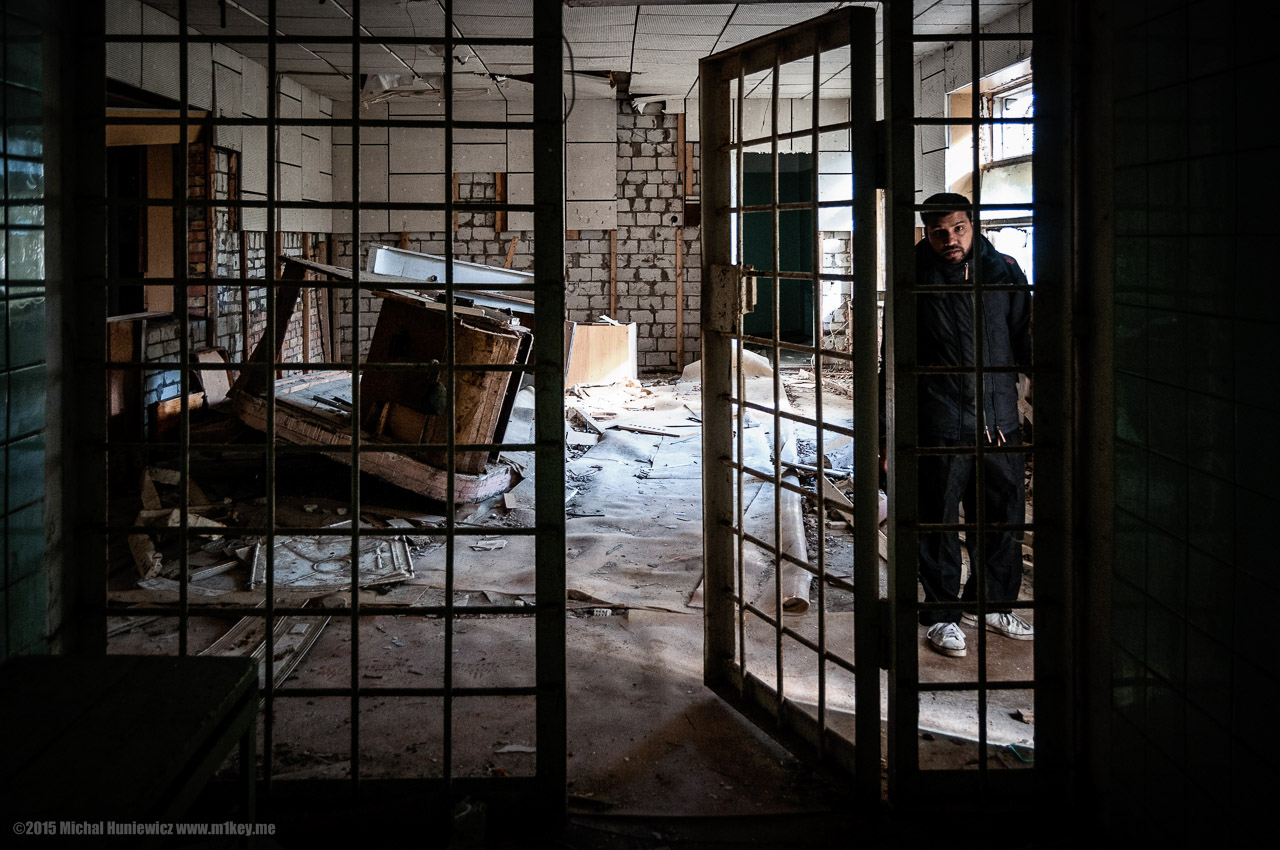
The most well known is the S.T.A.L.K.E.R. series (read about the origin of the term stalker). Part of Call of Duty 4 also features Chernobyl. Several other games have some references. [17]
In the photo, Pripyat police station.
Arrest - Walking Area
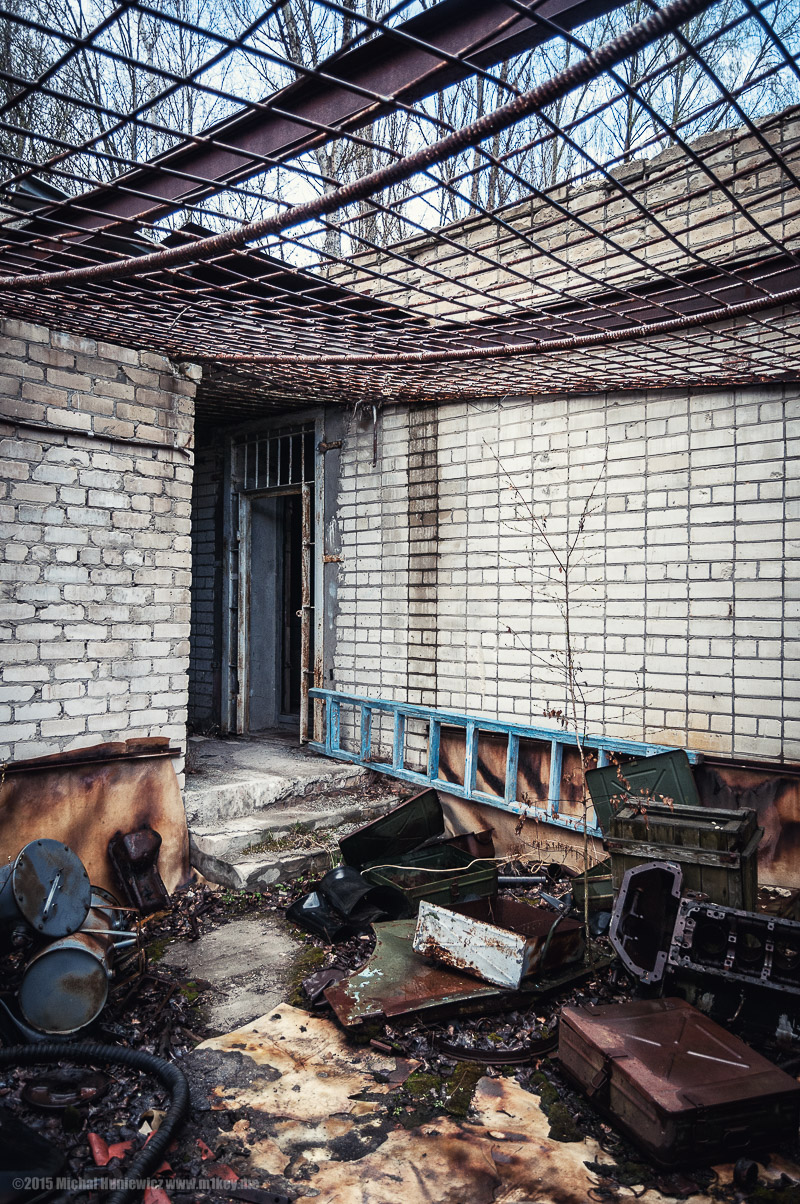
No - it could still be contaminated, and even if your dosimeter says it's fine, it might be emitting alpha or beta radiation that your dosimeter probably isn't even showing.
Black Bird of Chernobyl
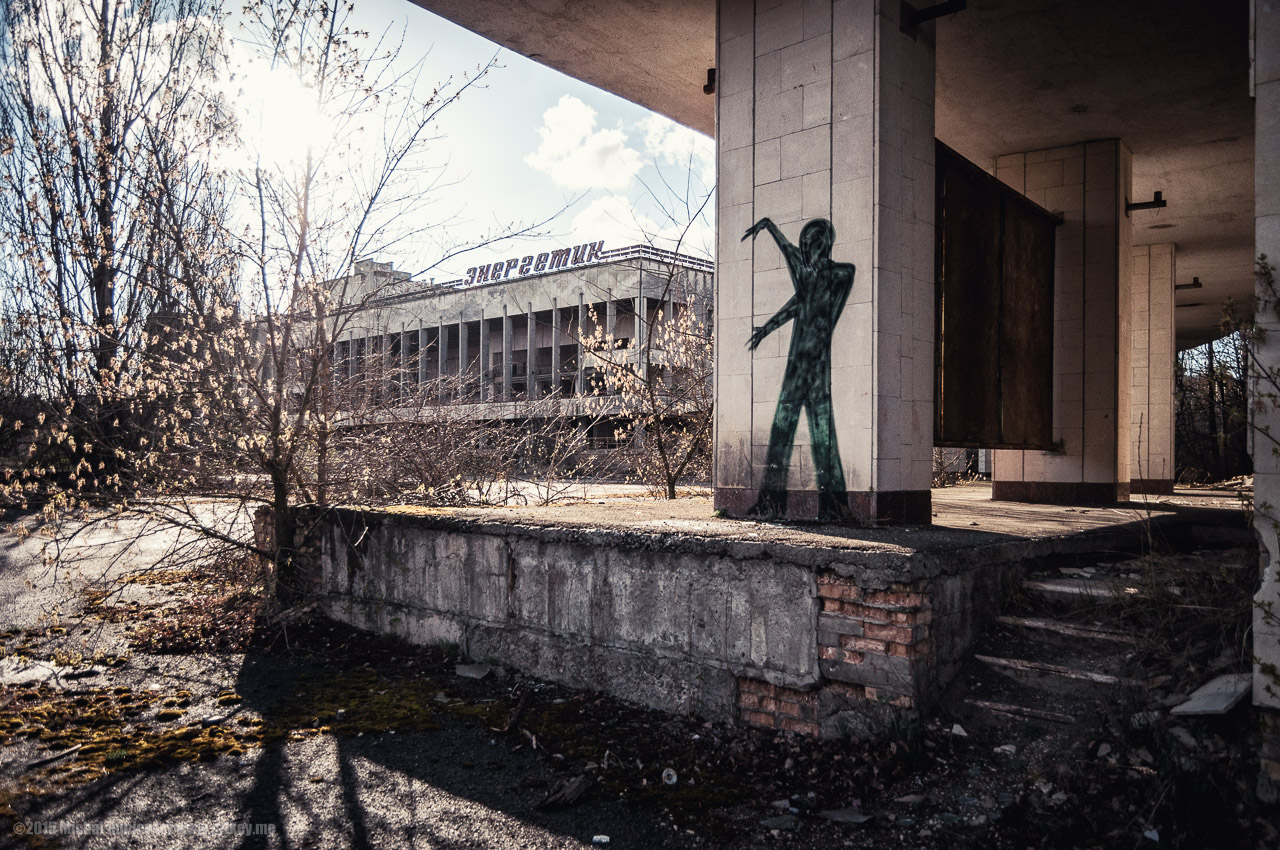
"Beginning in early April of 1986 the people in and around the little known Chernobyl Nuclear Power Plant began to experience a series of strange events revolving around sightings of a mysterious creature described as a large, dark, and headless man with gigantic wings and piercing red eyes. People affected by this phenomena experienced horrific nightmares, threatening phone calls and first hand encounters with the winged beast which became known as the Black Bird of Chernobyl." [18]
Despite similarities to its American counterpart Mothman, the Black Bird would also give people missed calls in the middle of the night.
Some suggested it's just a modern version of a similar belief present during the Crimean War. [19]
Pripyat Morgue
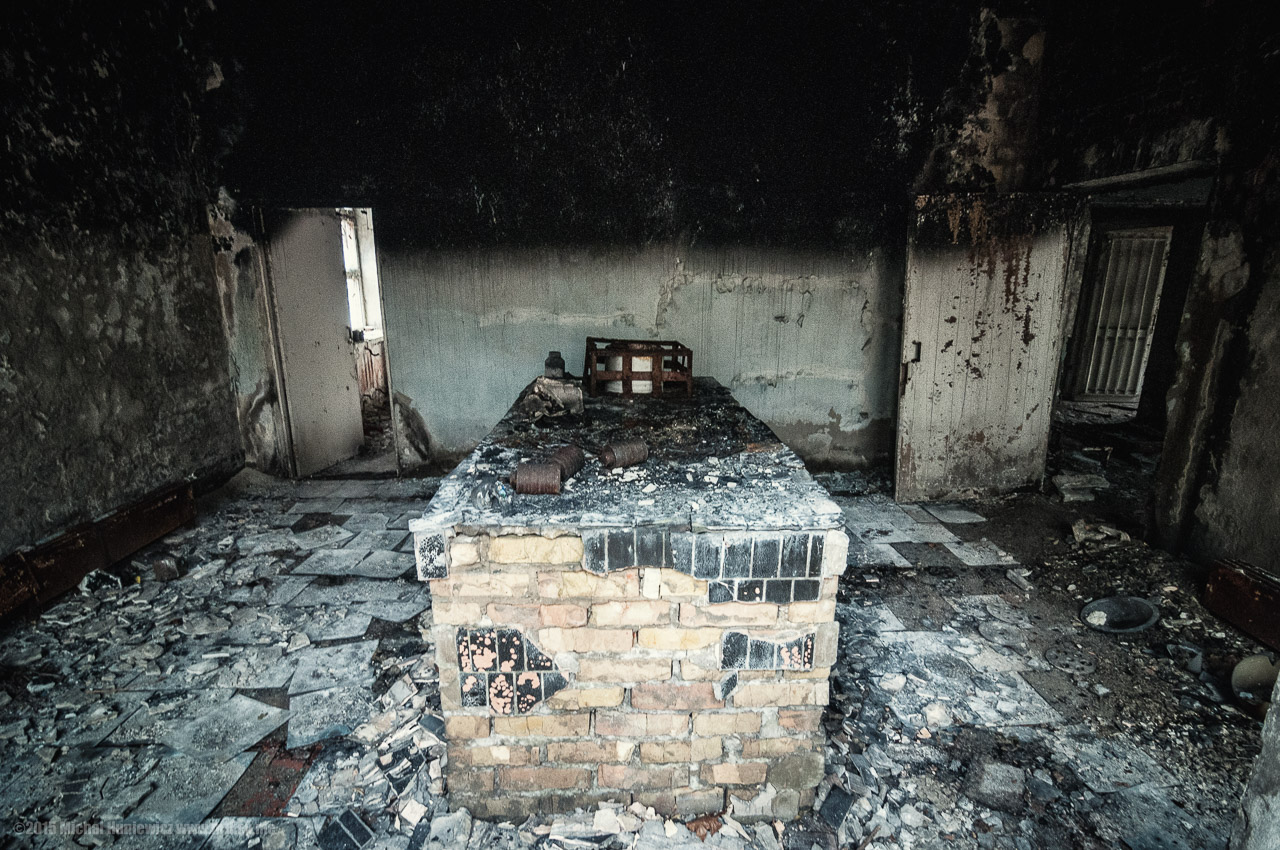
Forever empty - the bier in the Pripyat morgue, cold and quiet place.
Dissection Table
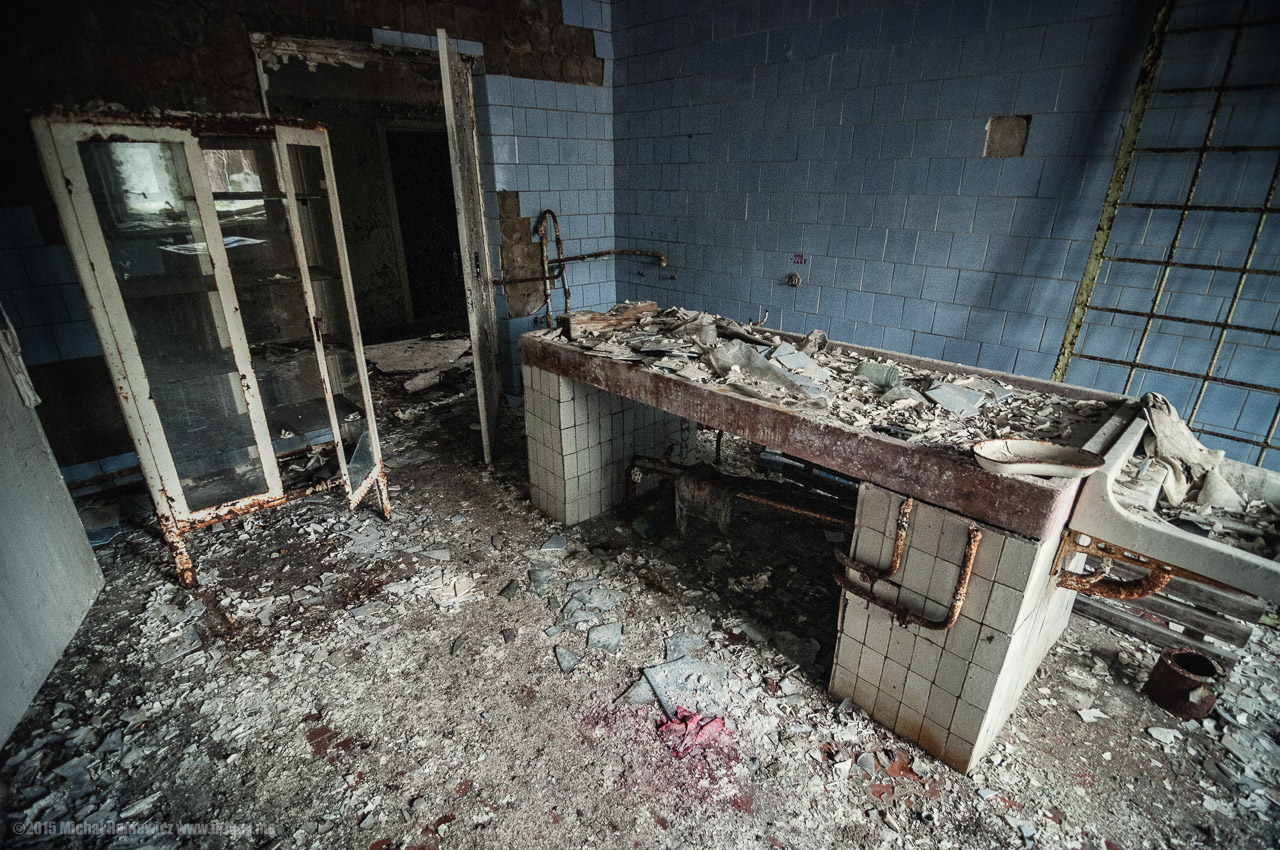
This is a stupid question, but also one I actually asked out guide. The answer was, disappointingly, no.
In the photo, lonely dissection table in the morgue.
Used Film Badge Dosimeters
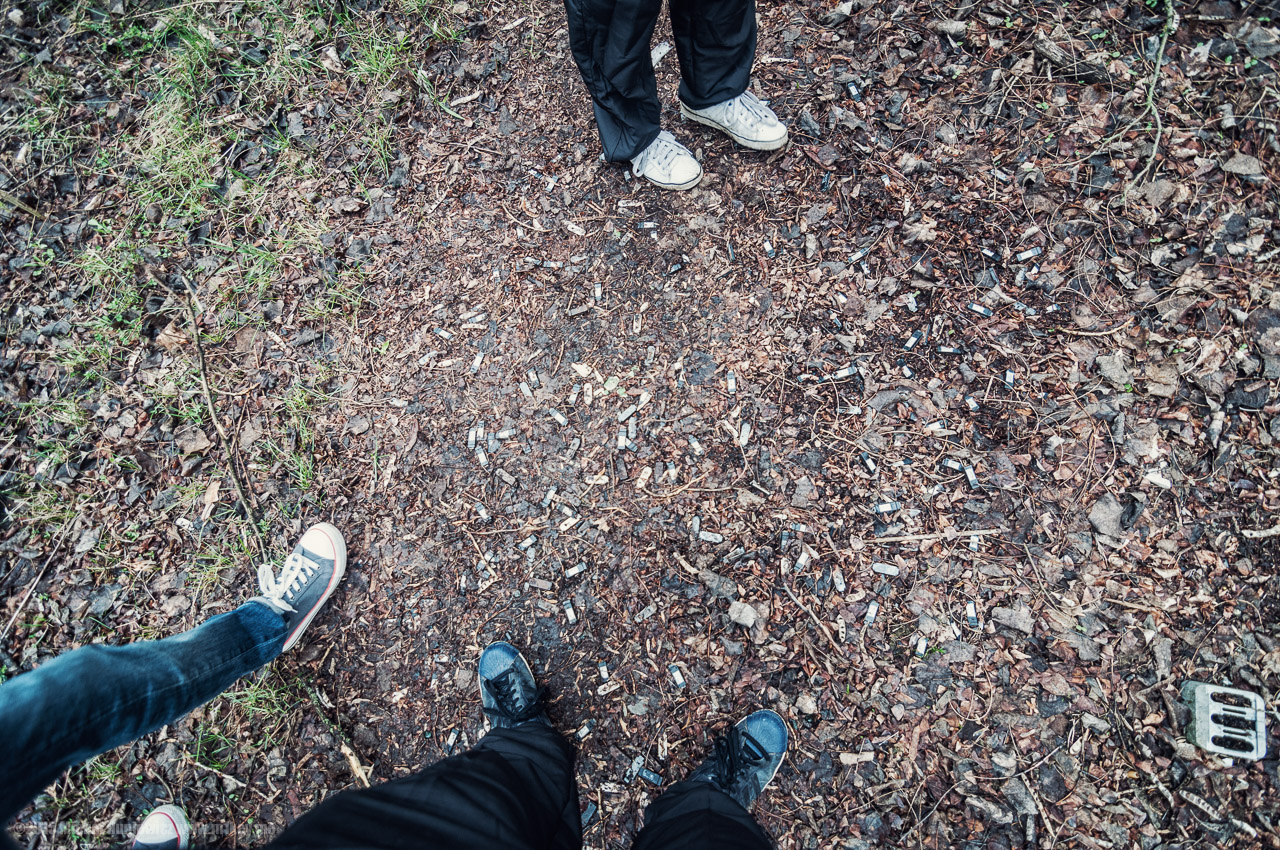
We only saw one other group, as after the Ukrainian-Russian war has started, tourists have been uneasy about visiting Ukraine (we were perfectly fine and safe).
Gas Masks
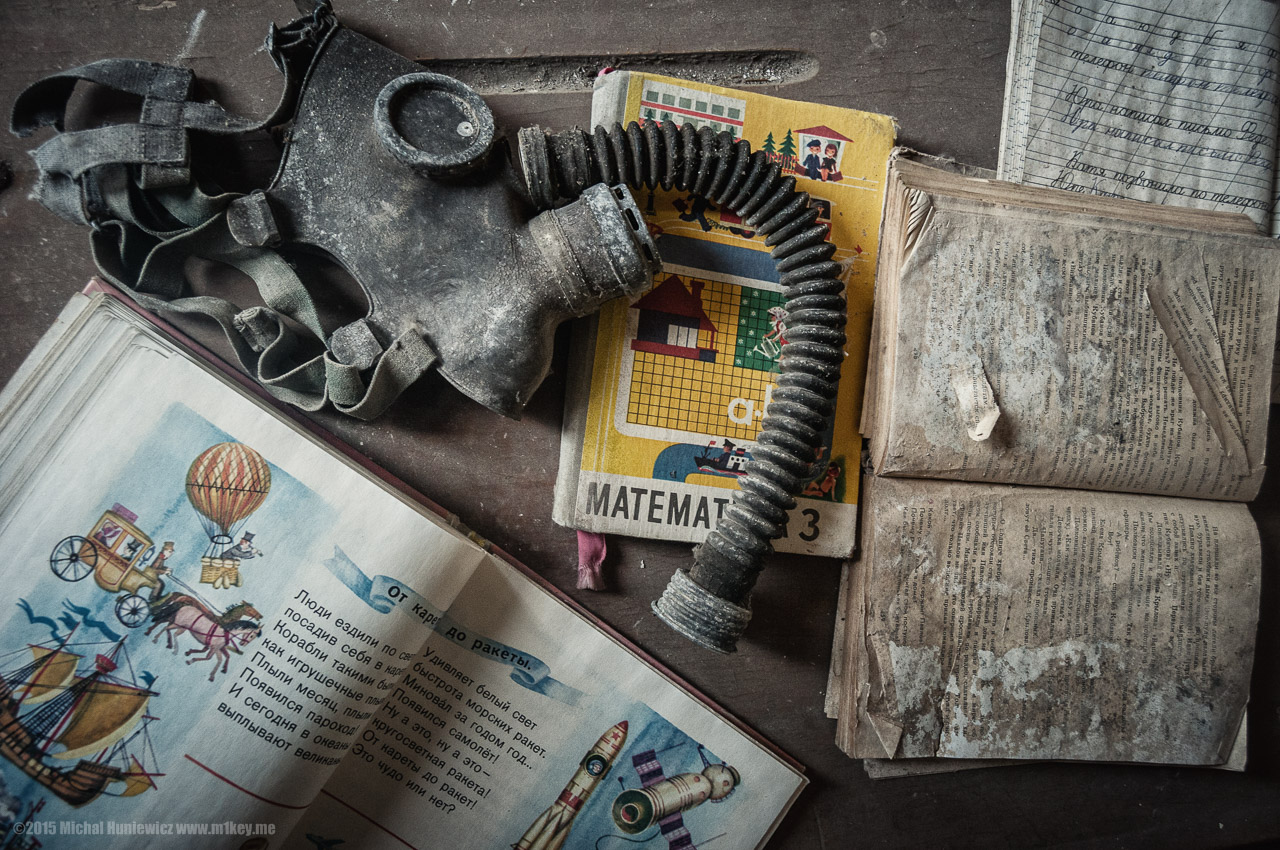
"Two large emaciated pigs were running in our direction on the narrow little lane from the school along the wall of a long five-story building. They came running up to the car, squealing, crazily touching the wheels and the radiator with their snouts. They were looking at us with poisoned red eyes, they raised their snouts toward us, just as though begging something. Their movements were somehow out of synch, uncoordinated. They were swaying. I poked the counter toward the flank of the hog—50 roentgens per hour. The hog tried to seize the counter in his teeth, but I managed to pull it away. Then the hungry radioactive pigs started to devour the mastiff. It was rather easy for them to tear large hunks from the flank of the corpse, which was already decomposing, pulling the corpse apart and dragging it here and there over the concrete. A swarm of agitated blue flies rose up from where the eyes had been and the parted jaws." [5]
Gas Masks
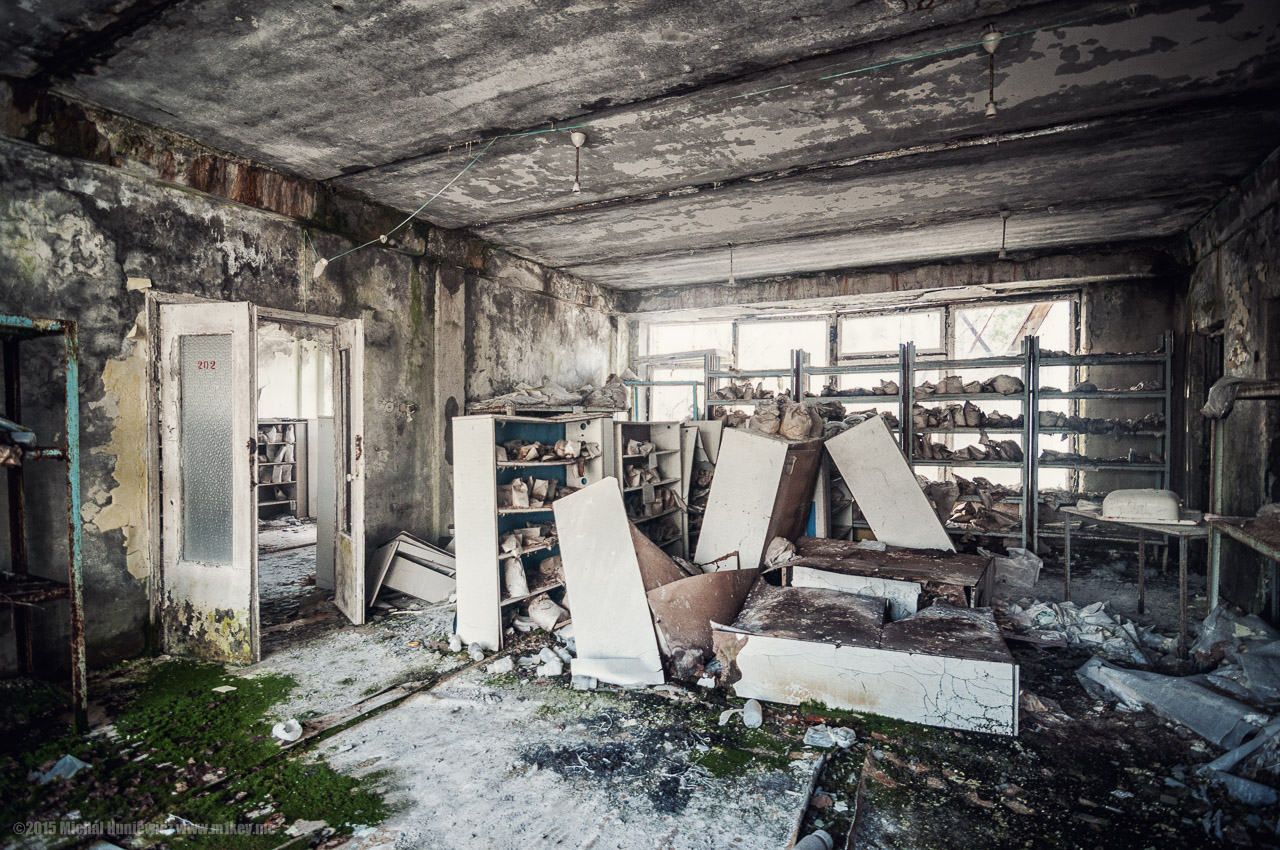
This inconspicuous room, apparently. It turned out that it was full of soil samples that contained plutonium, and I had to tiptoe my way out, as if afraid to wake a monster.
Mail Boxes
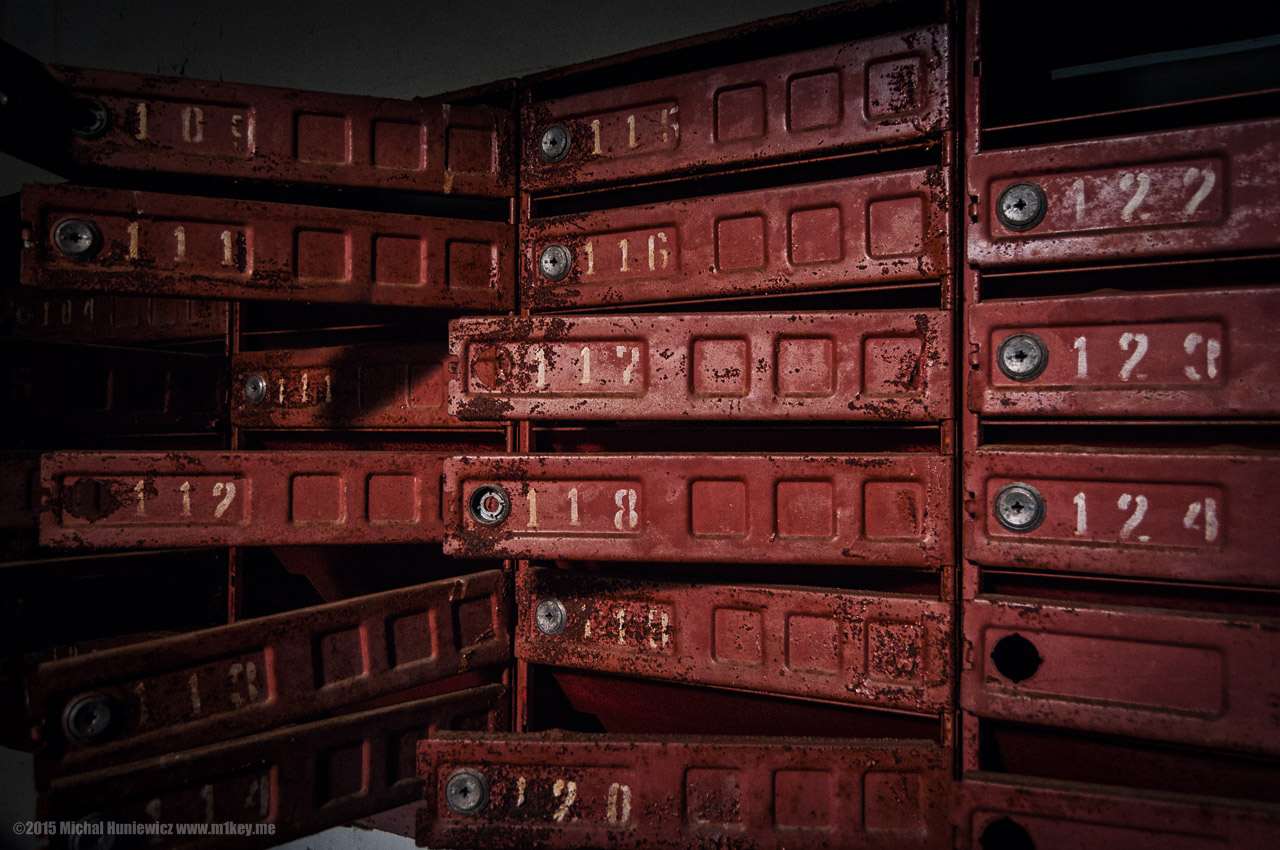
97% of the radioactive material is still inside the Sarcophagus. [25] The lid of the biological shield is precariously resting on what remains of the reactor at an oblique angle, and if it drops, we'll face a disaster even worse than we did in 1986. [1]
Get Yourself Checked
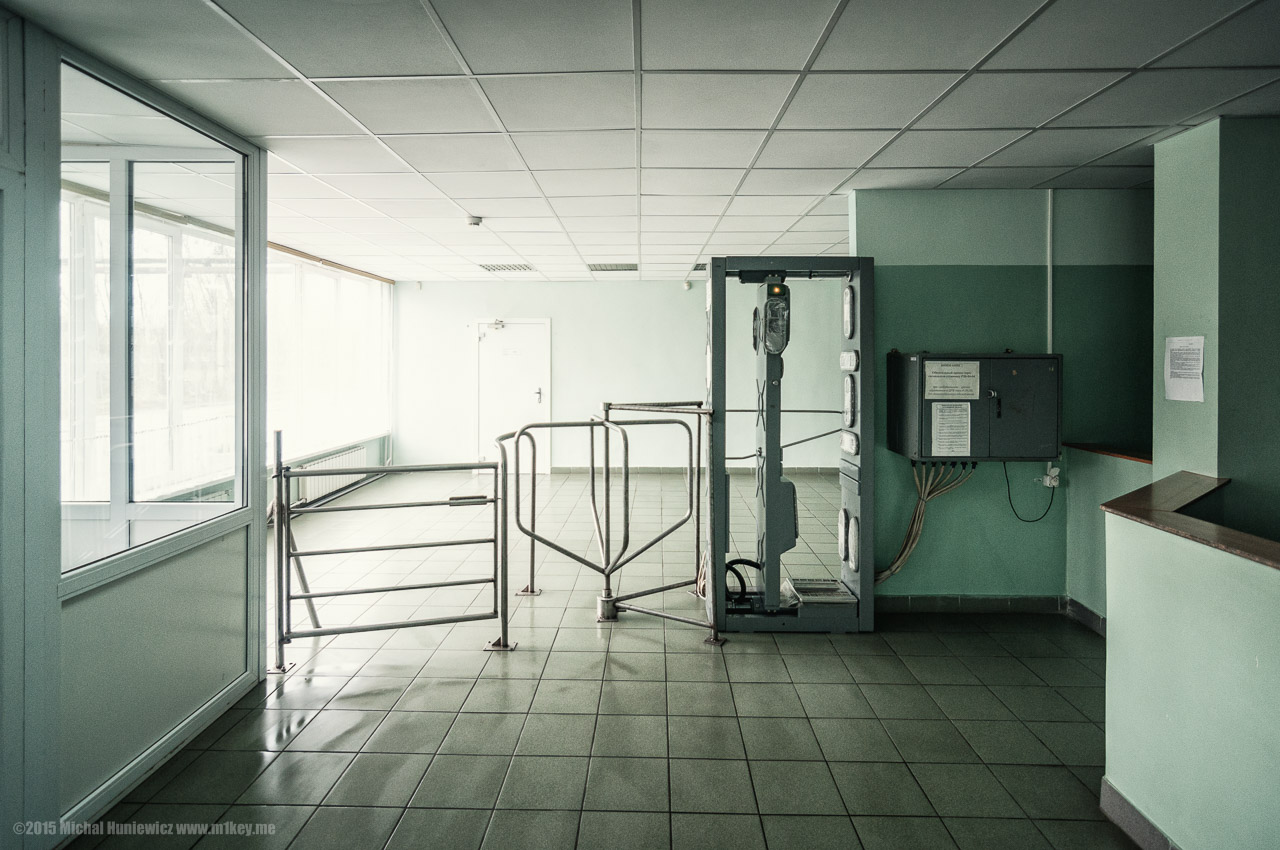
Who am I to answer! But, personally, I still think there are many advantages to using nuclear energy, especially keeping global warming in mind, as nuclear plants have lower greenhouse gas emissions. [24] Modern nuclear reactors (light water reactors) have a containment building that prevents nuclear fallout from spreading in the case of an emergency. [26]
Heroes?
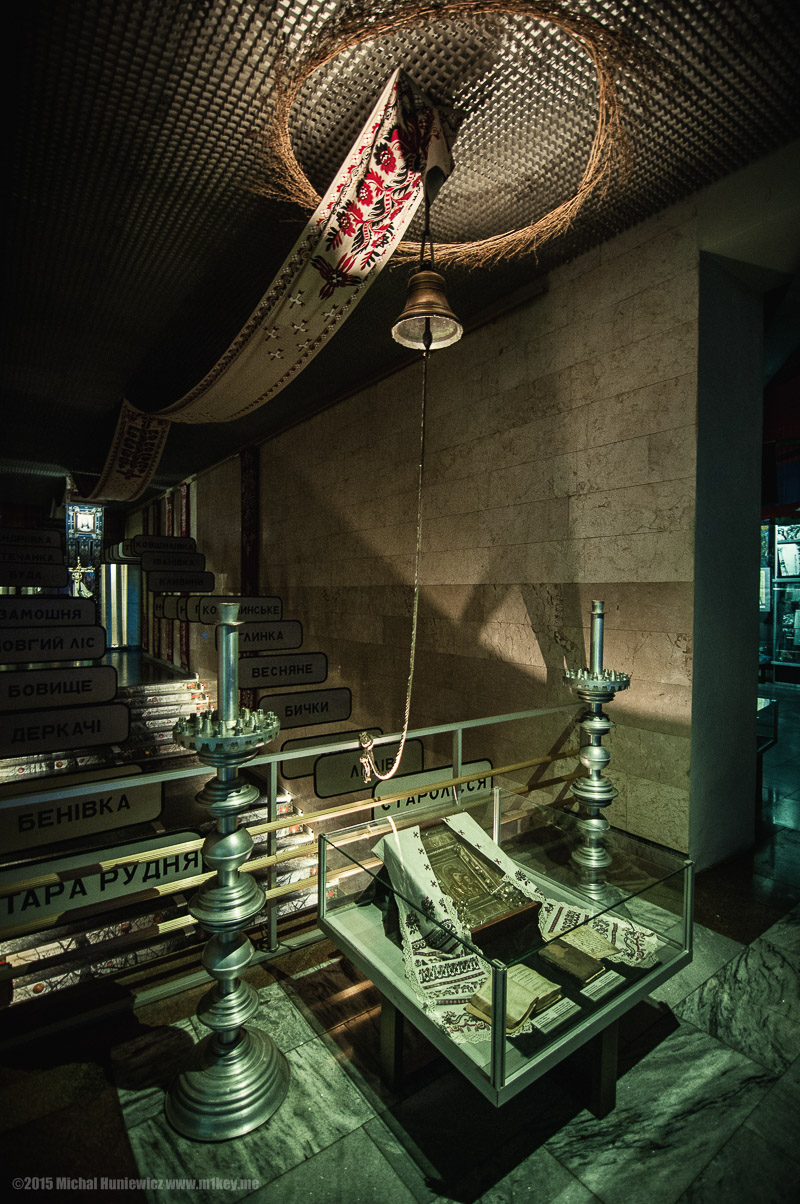
"Don't call these the 'wonders of Soviet heroism' when you write about it. Those wonders really did exist. But first there had to be incompetence, negligence, and only after those did you get wonders. [...] there shouldn't have been any need." [1]
Despite the enormous sacrifice they made, I struggle to call them heroes, as many didn't know the dangers they faced, and many had no choice. I see them primarily as victims. Regardless, those people saved the world.
The Liquidators
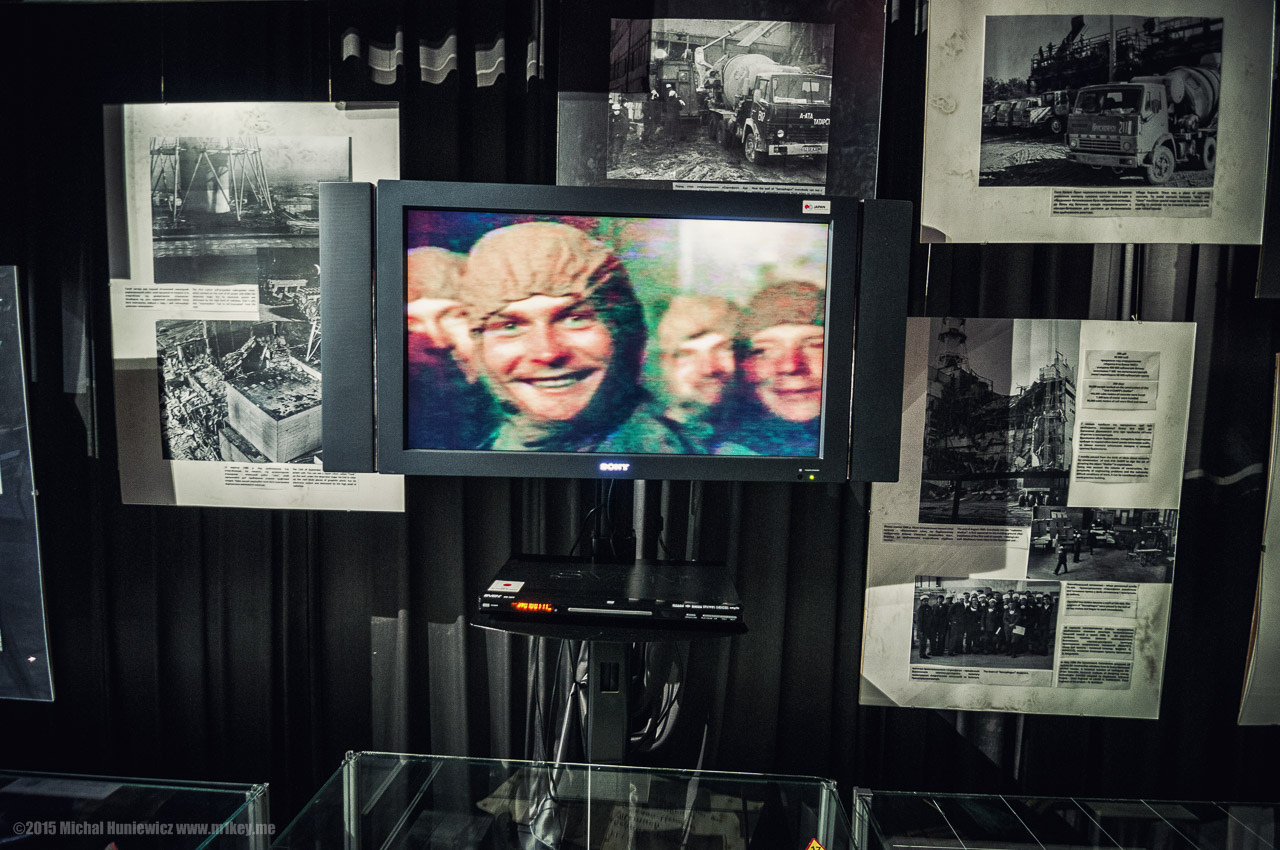
Thank you for viewing the gallery.
